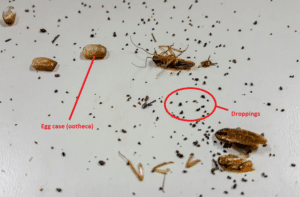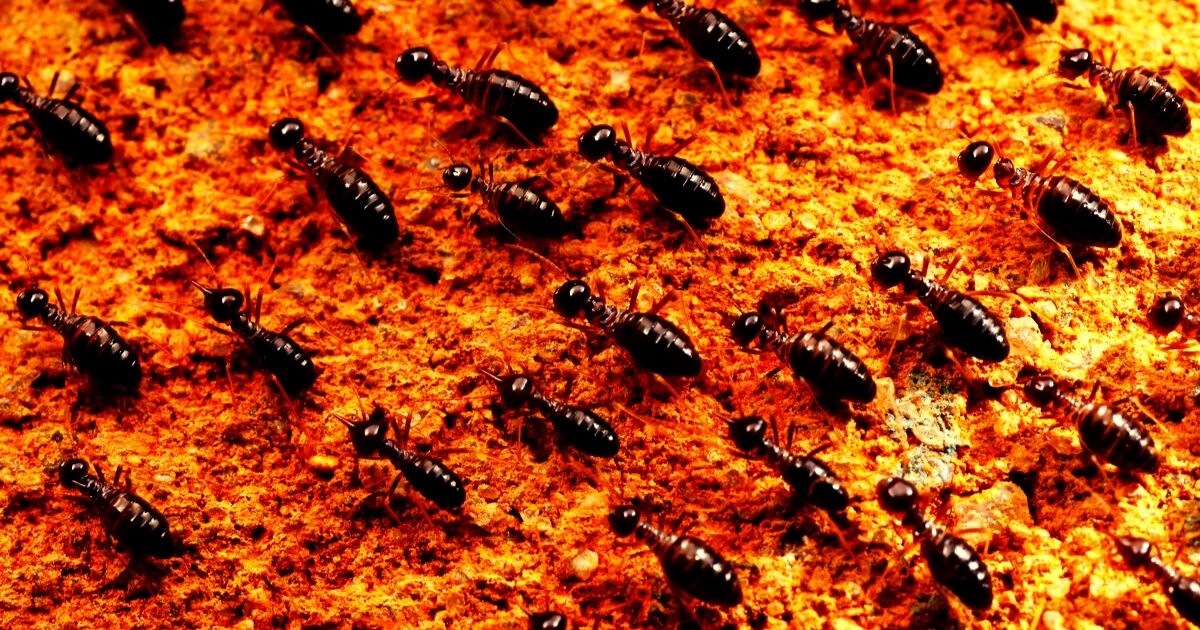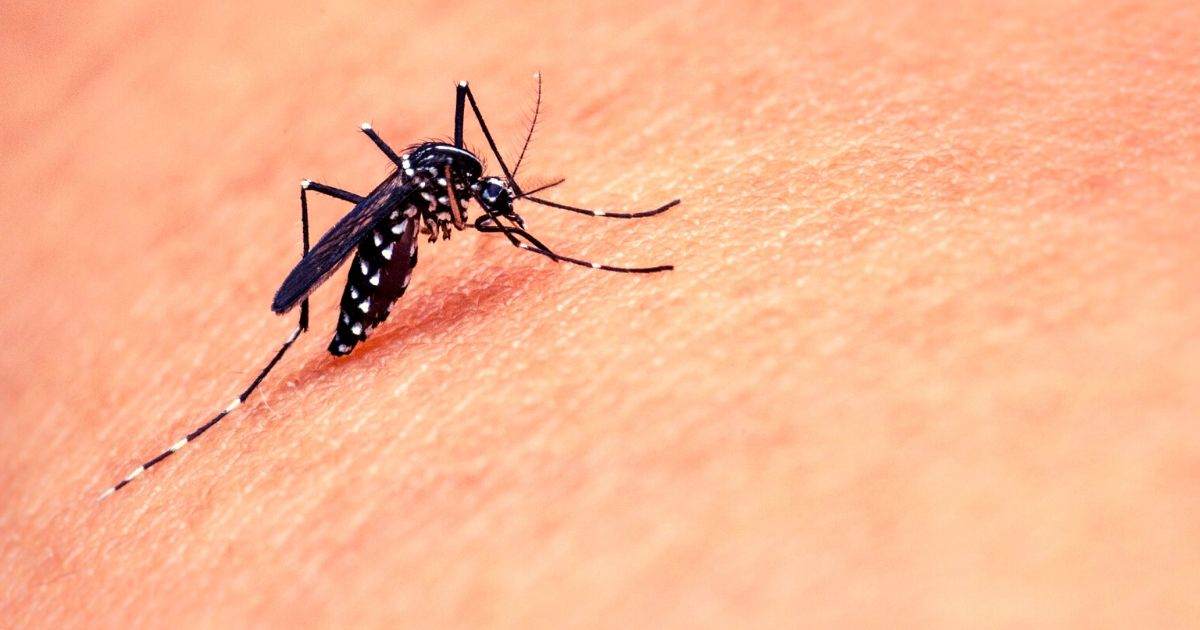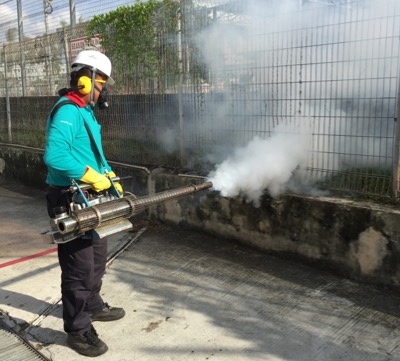How to Prevent and Treat Cockroach Bites in Singapore
Cockroaches

Cockroaches are among the most common pests worldwide, and unfortunately, Singapore is no exception. From food centres to high-rise apartments, cockroaches can infiltrate homes and other attracting establishments. While their creepy appearance is enough to make most people uncomfortable, few know that cockroaches can actually bite humans.
Table of Contents
- Do Cockroaches Bite or Sting Humans?
- Are Cockroach Bites Harmful or Dangerous?
- How Do Cockroach Bites Occur?
- Do Cockroaches Bite in the Day or Night Time?
- What Do Roach Bites Look Like?
- How Do You Treat a Roach Bite?
- Home Remedies for Roach Bites
- Why Cockroach Bites Shouldn’t Be Ignored
- How to Protect Yourself from a Cockroach Bite
- Cockroach Bites Can be Prevented with the Right Measures
Do Cockroaches Bite or Sting Humans?
Yes, cockroaches can bite, although it’s relatively rare. Unlike bees or wasps, cockroaches do not have a stinger. Their only mode of biting is through their mandibles, which they use to chew through organic material – including, in some extreme cases, human skin.
Biting typically occurs when a cockroach is searching for food and detects remainders on the skin. In heavily infested areas, where food is scarce, the chance of being bitten increases significantly.
Are Cockroach Bites Harmful or Dangerous?
While cockroach bites are not venomous, they should not be taken lightly. These pests carry a multitude of bacteria, including E. coli, Salmonella, and Staphylococcus, which can be transmitted through a bite. Additionally, cockroach saliva may contain allergens that trigger reactions, especially among sensitive individuals.
Some bites may result in secondary infections, swelling, or allergic skin reactions if left untreated. In humid climates like Singapore, where bacteria thrive, proper hygiene and prompt treatment are essential.
How Do Cockroach Bites Occur?
Cockroach bites typically occur when:
- A person is sleeping and has food residue on their hands, mouth, or face.
- There is a large infestation, and the roaches are desperate for food.
- The person is in close proximity to cockroach habitats (e.g., dirty kitchens, garbage bins, or cluttered areas).
Want to find out more about cockroach removal in Singapore?

Do Cockroaches Bite in the Day or Night Time?
Cockroaches are primarily nocturnal, which means they are most active during the night. They tend to avoid human interaction during the day and come out when it’s dark and quiet. This is also when bites occur – usually while a person is asleep and unaware.
In Singapore’s warm and humid climate, roaches thrive and often seek shelter in homes to escape the heat, increasing the chances of nighttime bites.
What Do Roach Bites Look Like?
A cockroach bite resembles other insect bites but is often slightly larger, more red, and may swell more significantly. Common signs include:
- Raised red bumps
- Itchiness or irritation
- Swelling around the bite area
- Pain or a burning sensation
The bites are often found on the fingers, hands, face, and around the mouth, areas that may have food particles or scents.
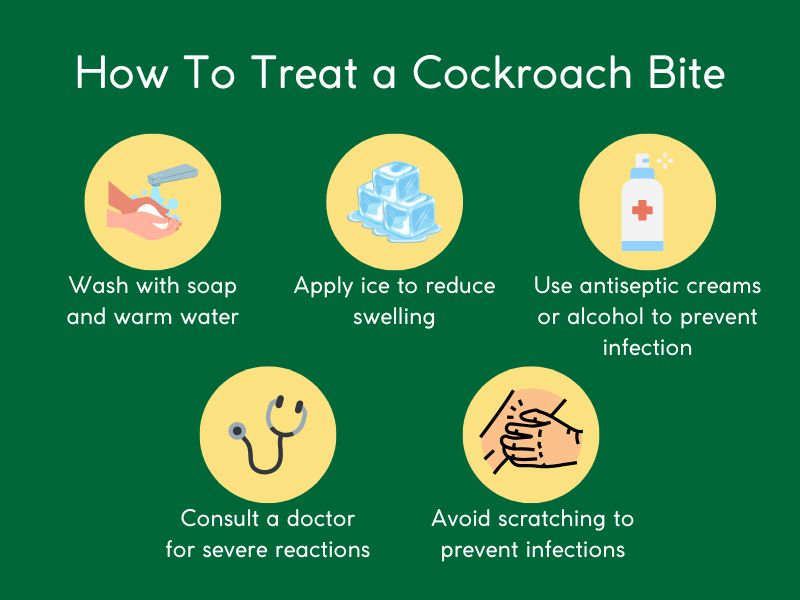
How Do You Treat a Roach Bite?
Treating a cockroach bite promptly can help reduce discomfort, prevent infection, and promote faster healing. Follow these steps to properly care for the wound:
Wash the Area Thoroughly with Soap and Warm Water
This removes bacteria, dirt, or saliva residue left by the cockroach. Washing the bite helps prevent infections and minimizes the risk of inflammation.
Apply Ice to Reduce Swelling
Wrap a few ice cubes in a clean cloth or use a cold compress, then apply it to the affected area for 10–15 minutes at a time. This helps reduce swelling, numbs the discomfort, and eases itching or pain.
Use Antiseptic Creams or Alcohol to Prevent Infection
After cleaning the area, apply an antiseptic ointment or cream to eliminate any lingering bacteria and speed up healing.
For Severe Swelling or Allergic Reactions, Consult a Doctor
If you experience increased redness, persistent swelling, oozing pus, or symptoms like shortness of breath or dizziness, seek medical attention immediately. These may indicate a secondary infection or allergic reaction, which are more likely if you have sensitive skin or existing respiratory issues such as asthma.
Avoid Scratching the Bite to Prevent Secondary Infections
Although the area may itch, it’s important not to scratch the bite. Scratching can break the skin barrier, introduce bacteria from your nails, and lead to painful infections or scarring. Use anti-itch creams or cold compresses to manage the discomfort.
Home Remedies for Roach Bites
If you don’t have access to medication or prefer natural alternatives, several home remedies can help alleviate symptoms and promote healing.
- Aloe Vera: Fresh aloe vera gel is well-known for its cooling, soothing, and anti-inflammatory properties.
- Tea Bags: Cooled, used black or green tea bags can be placed directly on the bite. The tannins in tea have natural anti-inflammatory and antimicrobial properties.
- Lemon Juice acts as a natural antiseptic. However, avoid this remedy if the bite is open or if you have sensitive skin, as it can cause stinging or irritation.
- Baking Soda Paste: Mix baking soda with a small amount of water to form a paste and apply this to the bite to relieve itching, reduce inflammation, and draw out toxins.
Note: While home remedies can be effective for mild symptoms, they are not a substitute for medical treatment if the bite worsens or signs of infection appear.
Why Cockroach Bites Shouldn’t Be Ignored
Even though cockroach bites are rare, they’re often a sign of a serious infestation. Ignoring them not only poses a health risk but also allows the problem to worsen. In Singapore, where the climate is ideal for roaches to breed rapidly, professional intervention is often necessary.
How to Protect Yourself from a Cockroach Bite
The best way to protect yourself from cockroach bites is to prevent infestations in the first place. Start by sealing cracks and entry points around your home, especially in kitchens and bathrooms. Keep food stored in airtight containers, clean up crumbs and spills promptly, and avoid leaving pet food out overnight. Regularly taking out the trash and removing clutter also eliminates hiding spots for roaches.
In Singapore’s warm and humid climate, where cockroaches thrive, it’s especially important to schedule periodic pest control treatments to keep infestations under control. You can significantly reduce your risk of bites and other cockroach-related problems by staying proactive with hygiene and prevention.
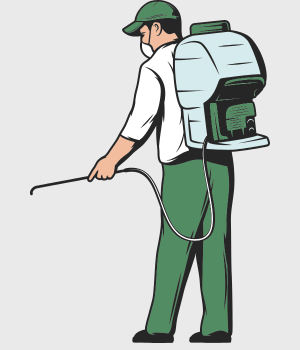
Pest Problem? Let Us Help.
We offer fast and effective precision treatments to eliminate pests while ensuring a safe environment for your home or business.
Cockroach Bites Can be Prevented with the Right Measures
While cockroach bites are not extremely common, they are still a cause for concern due to the health risks and indication of infestation. Cockroaches can multiply quickly and become difficult to manage without professional help.
Don’t wait for a bite to act. Prevention, cleanliness, and regular pest control services are your best defense against cockroach bites and infestations. If you suspect a cockroach problem in your Singapore home or business, consult Killem Pest to keep your environment clean, safe, and bite-free.
Author: Nicole Zycinski-Singh
Frequently Asked Questions
If a cockroach bites you you may experience mild pain or itching. The area might swell or become red. In some cases, a bacterial infection, allergic reactions or dermatitis may follow. If untreated, a wound could worsen and require medical attention.
Yes, while not poisonous, cockroach bites can transmit bacteria like Salmonella and E. coli, leading to infections or allergic reactions.
Absolutely. Especially in cities like Singapore, professional services ensure thorough and long-lasting control of infestations.
Cockroach bites are rare but can happen when infestations are severe or when food remainders are left on the skin. Singapore’s warm climate supports year-round breeding, making vigilance necessary.
Yes. People with asthma or sensitive skin may experience swelling, rashes, or even respiratory issues triggered by allergens in cockroach saliva.
It’s recommended to schedule pest control services every 3 to 6 months, or more frequently if your property is prone to infestations.
How to Identify and Handle Cockroach Droppings in Your Home
Cockroaches

Discovering cockroach droppings in your home is almost always a warning sign of an infestation. These tiny droppings may seem insignificant at first, but they carry serious health risks and should not be ignored. We will help you identify cockroach poop, differentiate it from other pests’ droppings, and explain what to do if you find it in your home.
Table of Contents
- Is Cockroach Poop Dangerous?
- What Do Cockroach Droppings Look Like?
- Rodent Feces vs. Roach Droppings
- Do Roach Droppings Have a Smell?
- Where You Might Find Roach Droppings
- Can You Find Roach Droppings but No Roaches?
- How to Get Rid of Roach Droppings
- What to Do If You Find Roach Droppings
Is Cockroach Poop Dangerous?
Yes, cockroach droppings pose significant health risks – apart from being just gross. Cockroaches regularly crawl through dirty environments and carry bacteria, viruses, and allergens in their feces. Exposure to roach poop can trigger allergies and asthma, especially in sensitive individuals like children and those with respiratory conditions. Additionally, roach droppings can contaminate food and surfaces, potentially spreading diseases such as Salmonella and E. coli.
What Do Cockroach Droppings Look Like?
Cockroach poop varies in appearance depending on the species and size of the roach. Generally, it looks like:
- Small black or dark brown specks, similar to ground coffee or black pepper.
- Cylindrical pellets with ridges (from larger cockroach species like American cockroaches).
- Smears or stains in areas where roaches are active, especially near corners, baseboards, or appliances.
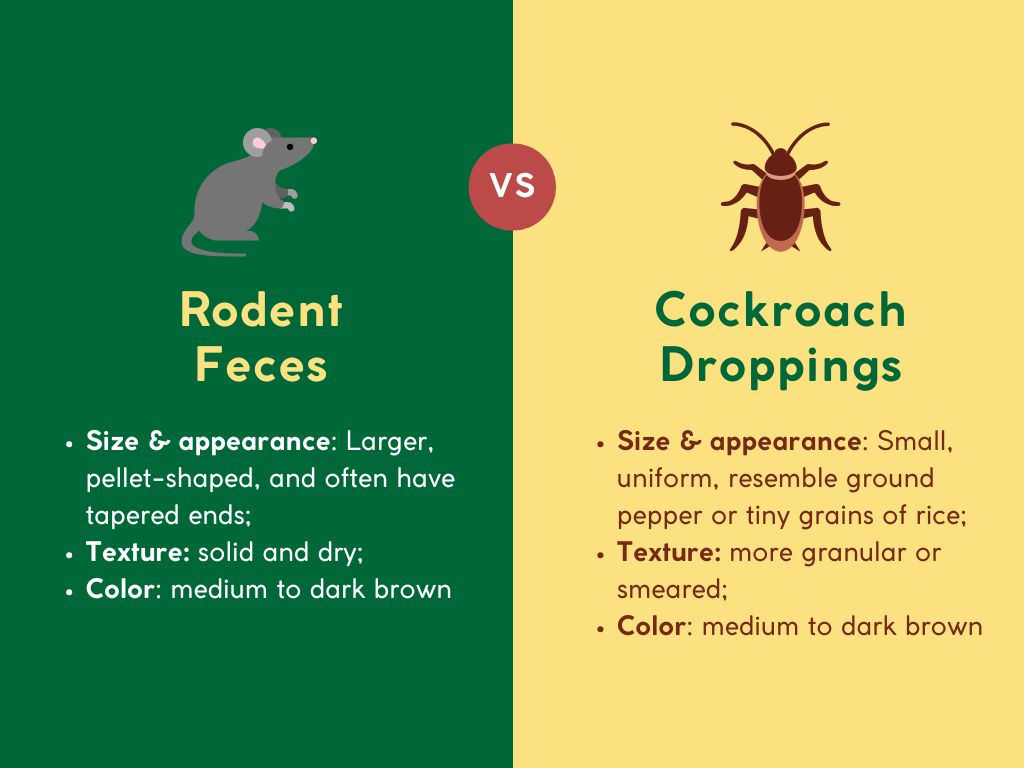
Rodent Feces vs. Roach Droppings
It’s important to distinguish cockroach droppings from rodent feces:
- Roach droppings are small, uniform, and resemble ground pepper or tiny grains of rice.
- Rodent feces (such as from mice or rats) are larger, pellet-shaped, and often have tapered ends.
- Texture also differs—rodent droppings are solid and dry, whereas roach droppings can appear more granular or smeared.
Do Roach Droppings Have a Smell
Yes, cockroach droppings emit a distinct, musty odor. This smell becomes stronger as the infestation grows and is often accompanied by pheromones that attract more roaches. If you notice an unpleasant, lingering scent in your home, especially in dark and humid areas, it could indicate a hidden infestation.
Want to find out more about cockroach removal in Singapore?
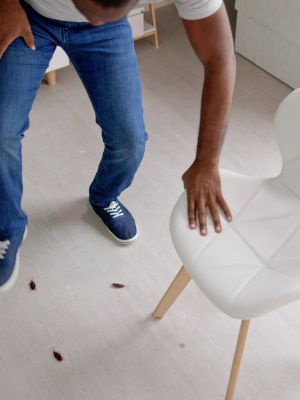
Where You Might Find Roach Droppings
Cockroach poop is typically found in dark, hidden spaces where they hide or travel frequently, especially near food and water sources. Some preferrable hiding places include:
- Kitchens – Near sinks, stoves, refrigerators, and inside cabinets.
- Bathrooms – Around drains, under sinks, and behind toilets.
- Basements and attics – Dark, undisturbed spaces with moisture.
- Behind appliances – Under microwaves, dishwashers, and washing machines.
- Inside drawers and pantries – Where food crumbs are present.
Can You Find Roach Droppings but No Roaches?
Yes, it is possible to see cockroach droppings without spotting live roaches. Roaches like to hide in cracks, crevices, and behind walls during the day. If you find their droppings, it’s a clear sign of their presence. You may also notice shed skin, egg casings, or a musty odor—additional indicators of an infestation.
How to Get Rid of Roach Droppings
Cleaning up cockroach poop is essential for maintaining a safe home environment. Here’s how to do it effectively:
- Wear protective gear – Use gloves and a mask to avoid direct contact with allergens.
- Vacuum the area – Use a vacuum to remove droppings without spreading particles.
- Clean thoroughly –Wipe down surfaces with a disinfectant or a mixture of bleach/soap and water. And don’t forget to throw away sponge after the cleaning.
- Dispose of waste properly – Seal vacuum bags and cleaning materials in a plastic bag before discarding them.
- Improve sanitation – Reduce clutter, store food in sealed containers and clean up food crumbs, seal off any entry points and eliminate moisture sources to deter roaches from returning.
Pro Tip: After cleaning, use a residual insecticide or roach repellent in high-risk areas to prevent future infestations.
What to Do If You Find Roach Droppings
If you discover cockroach droppings in your home, taking immediate action is crucial to prevent a worsening infestation:
- Inspect for additional signs – Look for live roaches, eggs, and hiding spots.
- Seal entry points – Close gaps in walls, pipes, and windows to prevent more roaches from entering.
- Use traps or baits – Set up roach traps to monitor and reduce the population.
- Contact a professional pest management company – DIY solutions may not be enough for severe infestations. A pest control expert can assess the situation and provide effective treatments to eliminate roaches for good.

Pest Problem? Let Us Help.
We offer fast and effective precision treatments to eliminate pests while ensuring a safe environment for your home or business.
Cockroach infestations can escalate quickly, making early detection and intervention essential. If you suspect a roach problem in your home, don’t wait — contact a professional pest management company today for a thorough inspection and tailored treatment plan.
Author: Nicole Zycinski-Singh
Frequently Asked Questions
Cockroach droppings can remain hazardous for a long time, as the allergens and bacteria they contain persist on surfaces. Proper cleaning and disinfection are essential to eliminate risks.
Yes, direct contact with cockroach feces can expose you to bacteria like E. coli and Salmonella, potentially leading to illness. Always wear gloves when cleaning and disinfect thoroughly afterward.
Yes, roach droppings release pheromones that signal other cockroaches to gather, potentially worsening the infestation. Cleaning up droppings promptly can help deter more roaches.
Cleaning helps remove allergens and bacteria, but it won’t eliminate the infestation. You’ll also need to address the root cause by sealing entry points, removing food sources, and using pest control methods.
Yes, but it’s best to use a vacuum with a HEPA filter to prevent allergens and bacteria from becoming airborne. After vacuuming, empty the bag or canister immediately and disinfect the area.
Yes, cockroach droppings can leave dark, stubborn stains on walls, especially in humid areas. Cleaning with soap, water, or a disinfectant can help remove the stains, but severe cases may require repainting.
Related Posts
How to Get Rid of Cockroaches in Cars
Cockroaches

Cockroaches in your car can be more than just an annoyance; they can pose health risks and potentially damage your vehicle’s interior. They can easily infest a car and it can be very difficult to get rid of them as they are attracted to food, warmth and moisture. If you’ve discovered cockroaches around your vehicle, it’s essential to take action promptly.
Table of Contents
- Why Do You Have Cockroaches Inside Your Car
- Common Ways of Cockroaches Getting in Cars
- Where Do Cockroaches Hide in Your Car
- What Are the Common Signs of Cockroach Infestation?
- Why It’s Important to Get Rid of Cockroaches in Your Car
- How to Get Rid of Cockroaches in Your Car
- How to Prevent Cockroaches From Returning to Your Car
- Professional Cockroach Removal in Singapore
Why Do You Have Cockroaches Inside Your Car?
Understanding what attracts cockroaches to your car can help you tackle the root cause of the problem. Cockroaches are drawn to warmth, shelter, and a readily available food source. Singapore’s climate combined with food crumbs, spilled beverages, and even cosmetics or paper products provide ideal conditions for cockroaches to thrive. And it’s not only cockroaches – other pests can also easily infest your car.
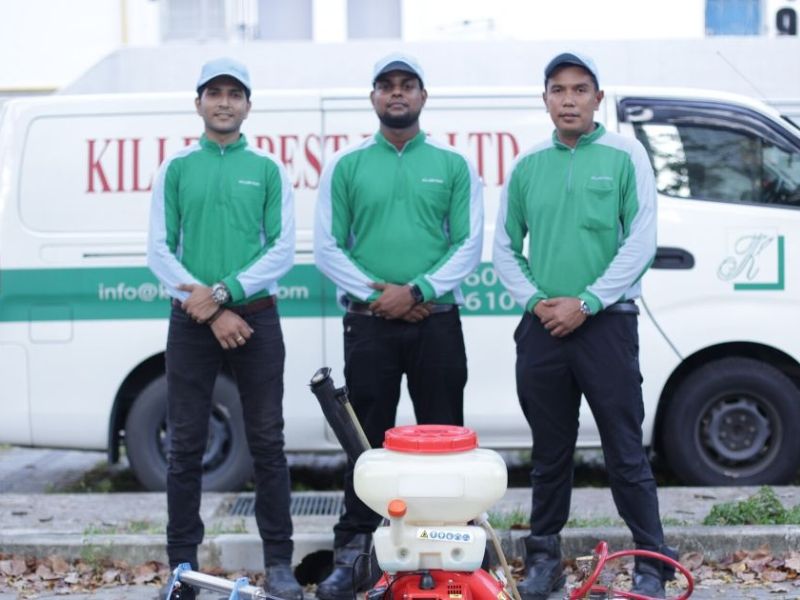
Common Ways of Cockroaches Getting in Cars
Another question you may have is: how did the cockroaches get into your car in the first place? Cockroaches can enter your car through various entry points, including:
- Open windows or doors
- Small openings, like gaps or cracks in the vehicle’s exterior, cracks in the windshield, etc
- Ventilation systems
- Carrying items infested with cockroach eggs or nymphs into the vehicle (ie luggage, used furniture, moving boxes, etc)
- Dirty garages are a perfect breeding place for cockroaches (that can easily move inside your car)
Want to find out more about cockroach car treatment in Singapore?

Where Do Cockroaches Hide in Your Car?
The key to getting rid of roaches is identifying their hiding places. To start with, consider areas where they can find food or shelter in your car. Cockroaches are used to finding hiding spots in the smallest spaces. Common areas where you might find them in your car include:
- Underneath car seats or carpet
- In the glove compartment
- Within the dashboard
- Behind door panels
- Trunk area
What Are the Common Signs of Cockroach Infestation?
Identifying signs of a cockroach infestation in your car is crucial for early intervention. Look out for:
- Droppings resembling black pepper or coffee grounds
- Egg casings (oothecae) in hidden crevices
- Dead cockroaches or old shells that have been shed
- Unpleasant, musty odor
- Live cockroaches, especially during nighttime
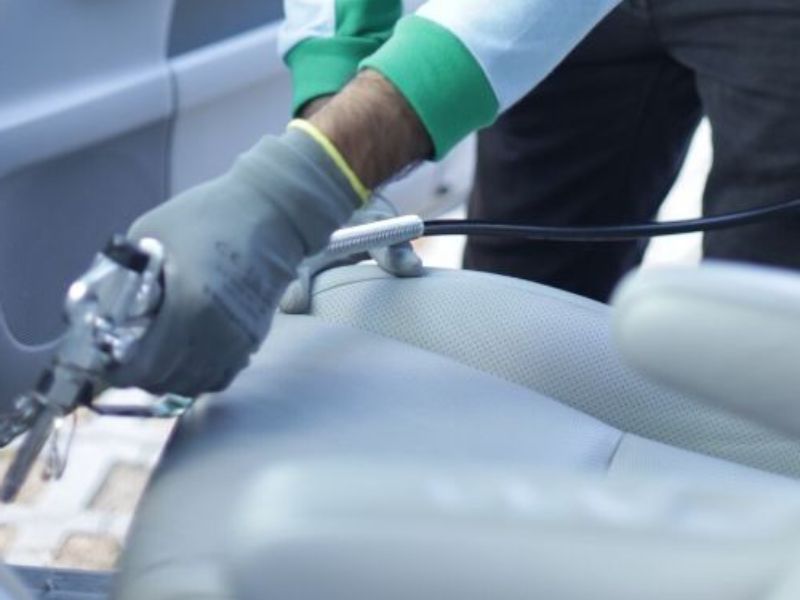
Why It’s Important to Get Rid of Cockroaches in Your Car
Apart from the discomfort of having cockroaches in your car, there are several reasons why it is important to eliminate them:
- Cockroaches can spread diseases and cause allergies, skin itchiness or breathing problems.
- They can cause damage to your vehicle’s interior by chewing on wiring and upholstery.
- Cockroaches can also be a dangerous distraction while driving.
- A cockroach-infested car can cause discomfort to passengers and deter potential buyers if you plan to sell your vehicle.
- Cockroaches can also attract additional pests like rats, causing a bigger infestation.
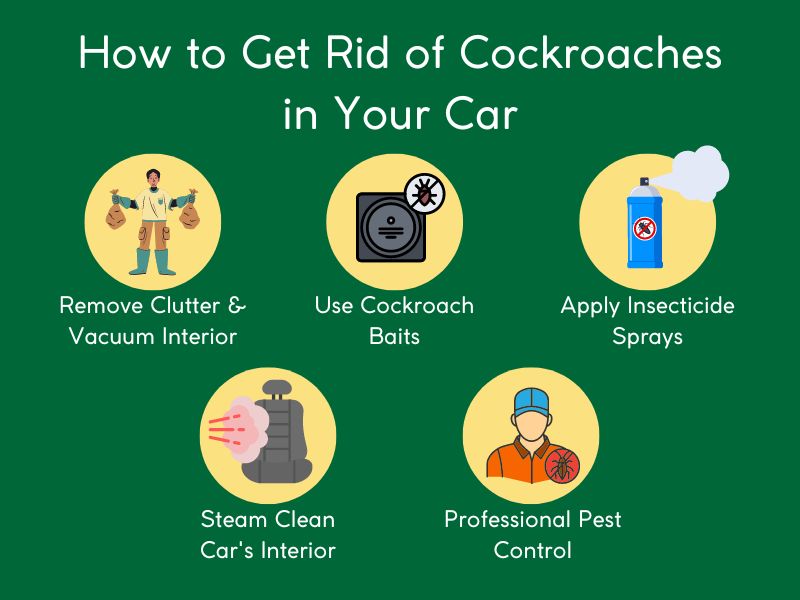
How to Get Rid of Cockroaches in Your Car
Getting rid of cockroaches in your car may seem like a challenging task, but following these steps can help you effectively eradicate cockroaches from your vehicle:
Regular Cleaning: Remove all clutter and sources of food, vacuum the interior thoroughly and pay close attention to crevices and under seats.
Use Cockroach Baits: Place cockroach baits strategically in your car, focusing on potential hiding spots. These baits contain insecticides that attract and kill roaches.
Apply Insecticide Sprays: Utilize sprays designed for indoor use in your car. Ensure proper ventilation during and after application.
Pro Tip: Combine professional car pest control services with DIY techniques and proper hygiene to ensure the thorough elimination of cockroaches from your car.
Steam Cleaning: Consider steam cleaning your car’s upholstery and carpeting, as high temperatures can effectively kill cockroaches and their eggs.
Professional Pest Control: If DIY pest control efforts remain ineffective, consider seeking help from professional car pest control services for cockroaches. Our Mirakn dry treatment for vehicles effectively eliminates cockroaches without causing any staining or interior damage. Its fast-acting formula and active ingredients spread into even the tiniest spaces, effectively targeting cockroach populations.
How to Prevent Cockroaches From Returning to Your Car
Once you’ve eliminated the cockroaches from your car, take measures to prevent their return:
Maintain Cleanliness: Regularly clean and declutter your car’s interior, promptly removing any spills or food crumbs.
Avoid Eating in your car: Even if you try to eat carefully, the smallest food crumbs can attract cockroaches to your car, so try to avoid eating inside or clean afterwards.
Seal Entry Points: Keep your windows and doors closed, and seal any gaps or cracks in your car’s exterior to prevent cockroaches from entering.
Pay Attention to Where You Park: Keep your garage clean, and if you park outside, avoid parking near garbage bins, drains and dirty areas.
Use Repellents: Consider using natural cockroach repellents, such as cedarwood sachets or essential oils like peppermint, to deter roaches from entering your car.
Regular Inspections: Conduct routine inspections of your car’s interior to detect any signs of cockroach activity.

Pest Problem? Let Us Help.
We offer fast and effective precision treatments to eliminate pests while ensuring a safe environment for your home or business.
Professional Cockroach Removal in Singapore
Early intervention is key to preventing cockroach infestations, but even your best efforts can be ineffective when dealing with severe infestations. This is where professional car cockroach treatment may be the answer. Professional car pest control services, coupled with proper hygiene, should guarantee the complete extermination of cockroaches in your car.
Author: Soleha Nisaa
Frequently Asked Questions
The time it takes for a cockroach infestation to become noticeable can vary depending on the size of the infestation and the frequency of vehicle use. In some cases, signs of an infestation may be evident within a few weeks, while in others, it may take longer for signs to appear.
Natural methods for removing cockroaches from cars include using natural repellents such as diatomaceous earth, boric acid, or essential oils like tea tree oil or eucalyptus oil.
Yes, cockroach infestations in cars can potentially spread to other areas. Cockroaches can move or be transported to homes, workplaces, or other vehicles. It’s essential to address infestations promptly and take preventive measures to stop the spread of cockroaches.
Related Posts
What to Expect After a Cockroach Fumigation
Cockroaches
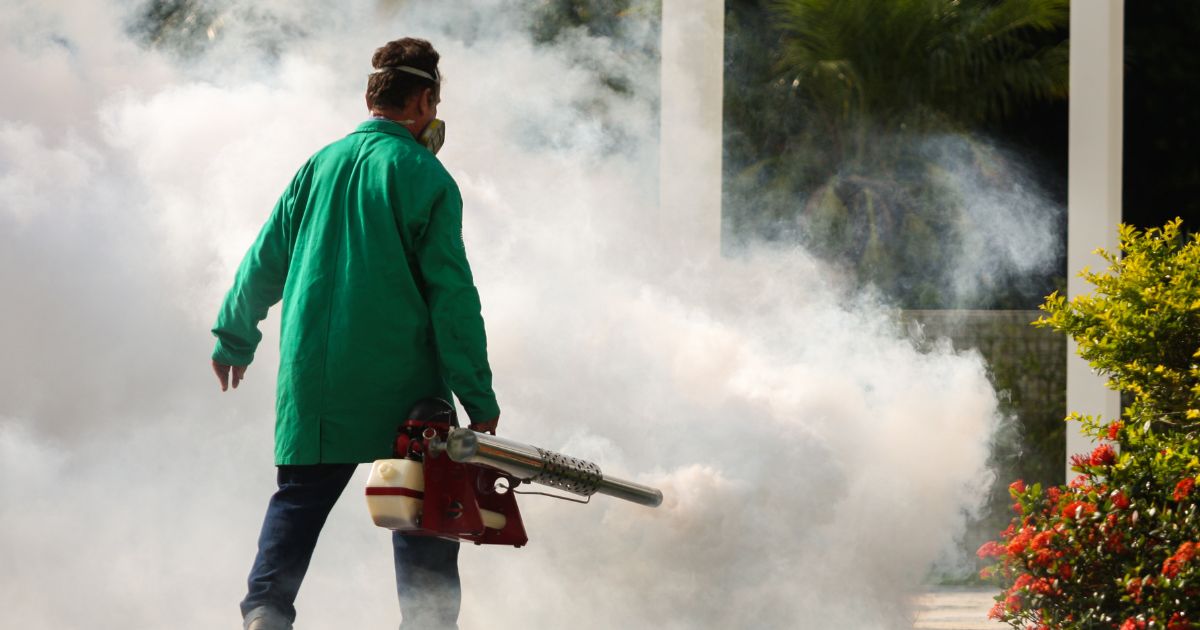
Having cockroach infestations can be irritating for homeowners and businesses. They can quickly multiply, posing health risks and causing significant property damage. Unfortunately, using commercial and DIY solutions may not be effective for larger infestations. This is when many people turn to fumigation as a solution. If you are wondering what happens after fumigation, here are some important factors to consider and what to expect next.
Table of Contents
- Is Fumigation Effective for Cockroach Infestation?
- Do Roaches Get Worse After Cockroach Treatment?
- Why Do I Still See Cockroaches After Fumigation?
- What Should I Expect After Cockroach Fumigation?
- What to Do After Cockroach Fumigation
- What Not to Do After Cockroach Fumigation
- How Soon Can You Clean After Cockroach Fumigation
- What to Do If You Are Still Seeing Cockroaches After Treatment
Is Fumigation Effective for Cockroach Infestation?
Fumigation is a highly effective method for eliminating cockroach infestations, especially when the infestation is severe or widespread. Cockroach exterminators in Singapore use specialized chemicals that spread deep into cracks, crevices, and other hiding places of roaches. These chemicals can reach areas that traditional sprays or baits can’t, ensuring thorough eradication of the pests.
Do Roaches Get Worse After Cockroach Treatment?
Typically, professional fumigation leads to a significant reduction in the cockroach population. However, some cockroaches may still be visible immediately after treatment as they are trying to escape the chemicals killing them.
Why Do I Still See Cockroaches After Fumigation?
Several factors can contribute to the continued presence of cockroaches after fumigation or pest control treatment:
- Firstly, it takes time for the chemicals to reach all areas of infestation, and some resilient cockroaches may survive initial exposure.
- Additionally, cockroach eggs are resilient and may not be affected by the fumigation. These eggs can hatch days or even weeks after treatment, so you may see cockroaches at your property again.
- Moreover, if your neighbours have untreated infestations, cockroaches may migrate back into your property.
Want to find out more about cockroach removal in Singapore?

So, What Should I Expect After Cockroach Fumigation?
Once a pest control professional has treated your property, you may expect all of the roaches to go away immediately. However, for more severe infestations you might need time or multiple treatments to completely eradicate the cockroaches. Here are some other things you can expect:
- You may still see the cockroaches at your property after the fumigation, as mentioned before.
- You will need to keep your home clean and continue pest control efforts to avoid future infestations.
- You’ll have to deal with the aftermath of fumigation, i.e. cleaning the dead roaches throughout your property.
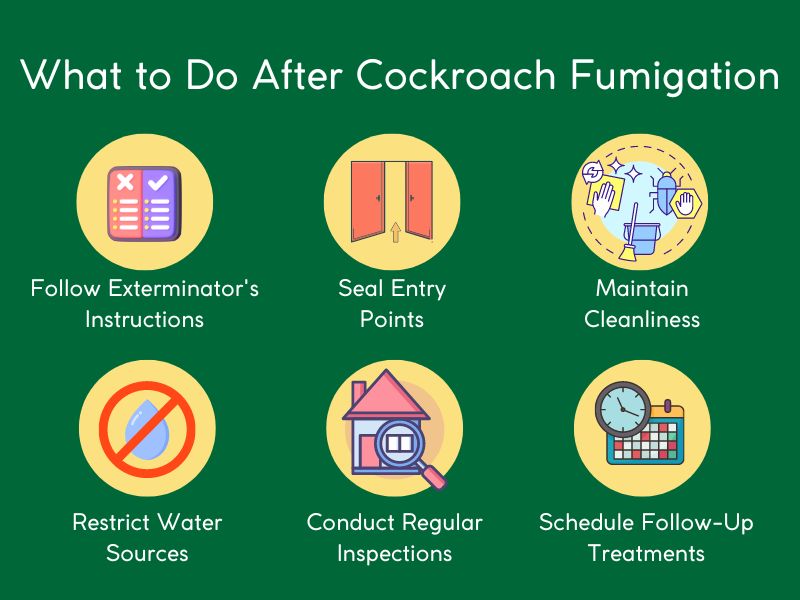
What to Do After Cockroach Fumigation
After a cockroach fumigation treatment, there are several steps homeowners and businesses can take to ensure the effectiveness of the treatment and prevent reinfestation:
Follow Exterminator’s Instructions: Pest control professionals usually provide specific instructions regarding post-fumigation procedures. It’s essential to follow these instructions to maximize the effectiveness of the treatment.
Seal Entry Points: Cockroaches can enter buildings through tiny cracks, so it’s important to seal any potential entry points to prevent reinfestation.
Maintain Cleanliness: Cockroaches are attracted to food crumbs, spills, and clutter. Keep your space clean and tidy to prevent future cockroach infestations.
Restrict Water Sources: Cockroaches will look for water sources to survive, so make sure your plumbing is secure and hard to get to.
Regular Inspections: Periodically inspect your property for signs of cockroach activity, look out for droppings, eggs, or unpleasant odors. Early detection can prevent smaller infestations from getting out of control.
Schedule Follow-Up Treatments: Depending on the severity of the infestation, you might need to schedule follow-up treatments to ensure complete eradication of cockroaches.
Pro Tip: Be patient and don’t clean the treated surfaces immediately after the fumigation, allow the chemicals to take full effect.
What Not to Do After Cockroach Fumigation
While there are several steps to take after cockroach fumigation, there are also certain actions to avoid to prevent compromising the effectiveness of the treatment:
Don’t Clean Immediately: Cleaning immediately after fumigation can disrupt the treatment, so it’s essential to wait for the recommended time to allow the chemicals to fully eliminate remaining pests.
Don’t Block Ventilation: Avoid blocking ventilation during and after fumigation to ensure proper spread of the fumigant and to prevent exposure to harmful chemicals.
Don’t Skip Follow-Up Inspections: Even if the initial treatment appears successful, don’t skip recommended follow-up inspections. Cockroaches are persistent pests, and thorough eradication may require multiple treatments.
How Soon Can You Clean After Cockroach Fumigation?
The time you need to wait before cleaning after cockroach fumigation can range from a few hours to several days. It varies depending on the type of chemicals used and the extent of the infestation. Generally, you will get specific instructions regarding when it’s safe to clean after treatment from the exterminator. Be patient and follow these instructions to avoid compromising the effectiveness of the treatment.

Pest Problem? Let Us Help.
We offer fast and effective precision treatments to eliminate pests while ensuring a safe environment for your home or business.
What to Do If You Are Still Seeing Cockroaches After Treatment
If you continue to see cockroaches after fumigation treatment, don’t panic. Contact your exterminator immediately to report the ongoing issue. Depending on your situation, the exterminator may recommend additional treatments, or further inspection to identify potential sources of reinfestation.
While fumigation can significantly reduce the cockroach population, it may not eradicate every single pest immediately. By following post-fumigation tips, maintaining cleanliness, and spotting the signs of reinfestation, you can enjoy a cockroach-free environment at your property.
Author: Soleha Nisaa
Frequently Asked Questions
While some cockroaches may die right after the treatment, it takes some time for the chemicals to take full effect. That’s why you might see cockroaches coming out for up to two weeks after the fumigation.
If you see cockroaches in uncommon places, or if they are moving slowly, this might be a sign that fumigation is taking effect.
In addition to fumigation, you can use bait stations, traps, and insecticide sprays. The effectiveness of these methods may vary depending on the extent of the infestation and the specific species of cockroach present.
The duration of cockroach fumigation effects can vary depending on environmental conditions and ongoing prevention efforts. While fumigation can provide long-term relief from cockroach infestations, proactive measures are essential for sustained pest-free environment.
Related Posts
Do Cockroach Traps Work? Ways to Trap Cockroaches Effectively
Cockroaches

Cockroach traps are a useful tool when dealing with cockroach infestations. These devices come in various forms, from sticky traps to baits, aiming to capture unwelcome guests. Understanding how cockroach traps work is crucial in removing these pests effectively.
What Are Cockroach Traps?
Cockroach traps are devices designed to attract and capture cockroaches. They come in two types: adhesive traps and bait traps.
How Do Cockroach Traps Work?
Adhesive traps have sticky surfaces that trap cockroaches and prevent them from moving upon contact. They are placed strategically in areas where cockroaches are seen frequently.
Bait traps, on the other hand, attract cockroaches with a mix of food and insecticide. They will consume the bait, return to their hiding spots, and eventually perish, often eliminating other cockroaches through secondary transfer of the insecticide.
Do Cockroach Baits and Traps Work?
Cockroach traps can be somewhat effective, but their efficiency varies based on factors like the type of trap, placement, and the extent of infestation.
Cockroach traps are more effective in dealing with smaller infestations when there’s no source of breeding. While they might reduce the population initially, they might not entirely eradicate a large infestation. Cockroach traps don’t deal with the root cause of the infestation.
Want to find out more about cockroach removal in Singapore?

Traps work better for smaller spaces, where you can identify risk areas and place the traps accordingly. Sticking plenty of traps in a larger space with more severe infestation won’t be as effective.
It is also worth remembering that over time, the effectiveness of traps might diminish as cockroaches adapt to the bait or develop resistance to certain insecticides. That’s why it is important to change or rotate baits regularly.
How to Use Cockroach Traps Correctly
For cockroach traps to work it is important to place them strategically. Placing traps in spots with high roach activity can help you identify the cause of the infestation or the infested areas.
Main spots include kitchens, bathrooms, behind appliances and along baseboards. When placing traps, ensure they are not obstructed and are placed where roaches can easily access them.
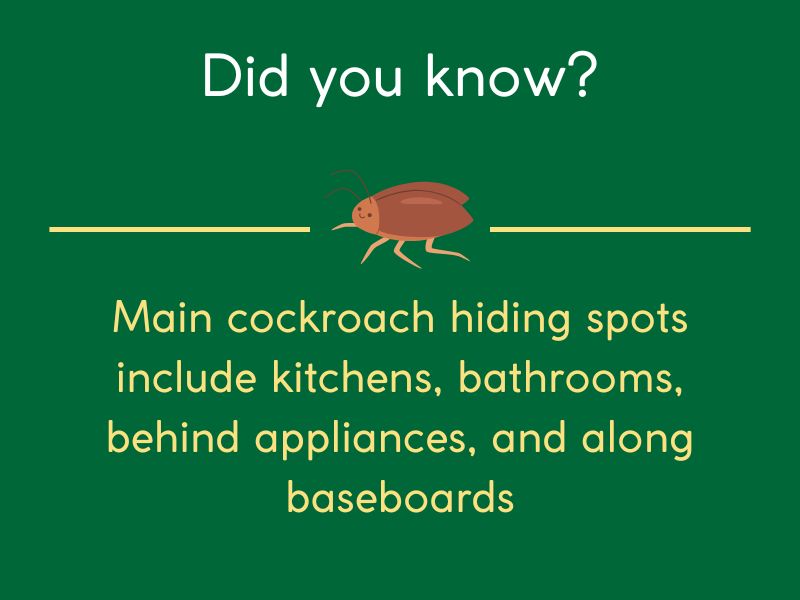
DIY Cockroach Traps
Besides commercial products, you can try using DIY cockroach traps along with other cockroach prevention methods. Homemade cockroach traps offer a cost-effective alternative for managing infestations. Here are some homemade methods you can try using simple materials like duct tape, bottles or jars:
Method 1: Duct Tape Trap
- Place a piece of duct tape sticky side up near cockroach hotspots.
- Put a small amount of solid food (bait) in the center of the duct tape. You can try using onions or anything with strong scents.
- The sticky tape will trap the cockroaches when they try to reach the bait.
Method 2: Jar Trap
- Create a way for cockroaches to climb inside the jar, for example by wrapping it with duct tape.
- Coat the inside of the jar with petroleum jelly so that cockroaches can’t get out of it.
- Place bait at the bottom of the jar – again, this can be something smelly like onion or overripe fruits.
- Place the jar where cockroaches are spotted. The cockroaches will be attracted in by the bait but won’t climb out due to the slippery jar interior.
Method 3: Bottle Trap
- Leave a small amount of red wine or a sweet liquid in the bottle.
- Spread cooking oil or petroleum jelly inside the top of the bottle.
- Place the bottle where cockroaches are present. Cockroaches will be attracted by the scent, climb in, slip on the oil, and get trapped.
Some additional tips include:
- Experiment with bait options like onion, fruit, or sweet liquids to see what works best in your situation.
- Dispose of trapped roaches by drowning them in hot water or releasing them far from your home.
Always be cautious when handling pests and consider consulting professionals for severe infestations.
Pro Tip: Don’t forget to regularly change or rotate baits to maintain cockroach traps’ effectiveness.
Cockroach Trap Removal
Once traps have captured cockroaches or the replacement time has come, safely dispose of them by sealing them in a plastic bag before discarding. For adhesive traps, avoid touching the sticky surface directly.
The Problem with Cockroach Traps
When placed in the right way, cockroach traps can still help homeowners deal with pest infestations and achieve some results. However, it is not as effective as the results from professional pest management services.
Cockroach traps have certain limitations and can only catch a few insects at a time. They are a good tool to identify and monitor infestations and can help to reduce visible pests, but they don’t deal with the root cause of it.
If you find cockroaches in your home, it is best to contact a pest management professional to discuss how to handle the infestation. Combining traps with proper sanitation, preventive DIY measures and targeted pest control methods can help to eliminate the infestation completely.

Pest Problem? Let Us Help.
We offer fast and effective precision treatments to eliminate pests while ensuring a safe environment for your home or business.
Author: Soleha Nisaa
Frequently Asked Questions
Yes, homemade cockroach traps are a cost-effective alternative. You can try different methods using duct tape trap, jar or bottle trap with different bait options.
Safely dispose of captured roaches by sealing them in a plastic bag before discarding. For adhesive traps, avoid direct contact with the sticky surface.
While cockroach traps can remove some cockroaches, they might not eliminate a large infestation entirely. They are more suitable for smaller spaces.
Adhesive traps are generally safe, but bait traps contain insecticides. It is also important to follow instructions and keep them out of reach of pets and children.
Related Posts
What Attracts Cockroaches to Your Home
Cockroaches

Cockroaches have been around in our homes for many centuries, adapting and surviving in various environments. They are often associated with filth and dirt, but what really attracts these unwanted guests to our houses? With this knowledge, you’ll be better prepared to take proactive measures to keep cockroaches away and maintain a pest-free living environment.
What Attracts Cockroaches the Most?
There are certain factors that make your home more attractive to cockroaches, including:
- Dirt and clutter
- Odors, particularly those associated with food
- Garbage cans and scent of rotting food and other organic matter
- Moisture
- Warmth
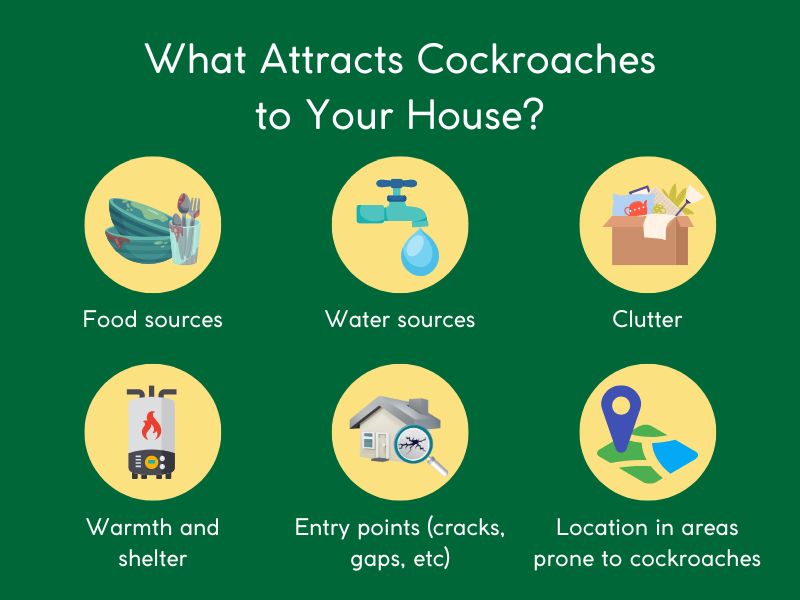
What Attracts Cockroaches to Your House?
Cockroaches are a common household pest that can bring annoyance and be a potential health hazard. Many people assume that if they keep their homes clean and tidy, they won’t have to worry about a cockroach infestation. However, even a spotless home can be attractive to cockroaches. Here are a few factors that can attract cockroaches to your house:
Food Sources. Cockroaches are attracted to any kind of food, including crumbs, grease, and food scraps. Even a small amount of food can be enough to attract cockroaches, so make sure to store food in sealed containers and keep your kitchen and dining area clean.
Water Sources. Cockroaches need water to survive, and naturally they are attracted to moisture. This can include leaky pipes, dripping faucets, and standing water in your sink or shower. To keep cockroaches away from your home, fix any leaks and prevent moisture with proper ventilation in your home.
Clutter. Clutter, like piles of papers or boxes, provide the perfect hiding place for cockroaches. This is why it is important to keep clutter to a minimum and get rid of any unwanted items.
Want to find out more about cockroach removal in Singapore?

Warmth and Shelter. Cockroaches are also attracted to warm and humid environments, and any dark and damp areas that provide shelter (e.g. basements, crawl spaces, and bathrooms). They can also appear near your heating system, radiators, or appliances that generate heat. Make sure you keep these areas clean and dry to prevent cockroach infestations.
Entry Points. Cockroaches can enter your home in search of food and shelter through even the tiniest of cracks or gaps around windows and doors, or in foundations. Make sure to seal any gaps or cracks and install door sweeps on all exterior doors.
Location. Some areas are simply more prone to cockroaches than others. If you live in these areas you can expect to see cockroaches even if your house is clean and spotless.
What Smells Attract Roaches?
Cockroaches are attracted to a variety of strong odors, particularly those associated with food. The following are some of the smells that can attract cockroaches to your home:
- Food odors, especially sweet and starchy food. The scent of cooking oils, sauces, and spices can also attract these pests.
- Garbage odors, like smell of rotting food and other organic matter, which is often found in garbage cans.
- Pet odors, like the smell of pet food, as well as the scent of urine and feces.
- Dirty dishes that are left in the sink can attract cockroaches due to the smell left by food.
- Musty odors caused by moist and humid environments. Basements, crawl spaces, and bathrooms are common areas where these smells can occur.
Pro Tip: When you notice the first signs of cockroaches in your home, take action promptly before the infestation becomes a bigger problem.
Common Places to Find Cockroaches in Your Home
Since cockroaches are attracted to various sources, they can be found in various areas of your home, including:
- Kitchen, as it provides easy access to food and water. They can for example be hiding in furniture, under the sink, behind appliances.
- Bathroom, as it can be a source of moisture and warmth for cockroaches. They can often be found in drains, behind the toilet, and under the sink.
- Basement, as it provides dark and humid environment. Cockroaches can be found hiding in boxes, cluttered areas, and around pipes and drains.
- Attic: cockroaches can enter through small cracks and gaps, and are attracted to the warmth and humidity in the attic.
- Laundry room: cockroaches can be found hiding in piles of dirty clothes or in the washing machine, as it offers a damp and warm environment for them.
- Garage: cockroaches are attracted to clutter and darkness and can hide in boxes, tools, and other items.
If you notice cockroaches in your home, it’s important to take action promptly to prevent an infestation. Contact a pest control professional to identify the source of the problem and develop a treatment plan to eliminate the cockroaches from your home.

Pest Problem? Let Us Help.
We offer fast and effective precision treatments to eliminate pests while ensuring a safe environment for your home or business.
Keeping Cockroaches Away from Your Home
Even clean homes can attract cockroaches if the right conditions are present. By knowing what factors attract cockroaches, you can take the necessary steps to prevent future infestations. If your cockroach problem is out of control and you need help, contact Killem Pest and our pest control professionals will handle the issue.
Author: Soleha Nisaa
Frequently Asked Questions
Cockroaches are scavengers and are attracted to a wide variety of food sources, including crumbs, spills, pet food, garbage, and even organic materials like cardboard. Any accessible food residue can draw them in.
To prevent cockroach infestations, you should maintain good hygiene, promptly clean up spills and crumbs, seal cracks and crevices, fix leaks, store food in airtight containers, and reduce clutter.
Yes, some natural remedies include using essential oils like peppermint or cedar oil, placing bay leaves in cupboards, and using boric acid or diatomaceous earth in problem areas. However, these remedies might not be as effective as professional treatments.
If you’ve attempted preventive measures and still experience a cockroach problem, it’s advisable to contact a pest control professional. They have the expertise to identify the extent of the infestation and implement effective treatment strategies.
Related Posts
The Ultimate Guide to Cockroach Prevention, Treatment and Control in Singapore
Cockroaches have been around on earth for more than 300 million years. They are one of the most common insects infesting households. There are more than 4500 cockroach species in the world, but less than 1% of them are known as pests.
Most cockroach species are in the wild. The ones that are associated with human habitats are classified as pests. Cockroaches play essential roles in the natural ecosystem. Some people even regard them as pets.
But mostly, cockroaches are described or depicted as disgusting creatures. Their existence often gives an indication of dirt or decay. The presence of it in food and beverage outlets poses health issues. In fact, it is very rare to encounter someone who sees a cockroach as an adorable or lovable insect.
Most people who live in urban or city areas cannot withstand the existence of a cockroach infestation in their house. Some may even get depressed. Indeed, controlling cockroaches requires knowledge and technique. Here we will look at the signs of a cockroach infestation before making a treatment decision.
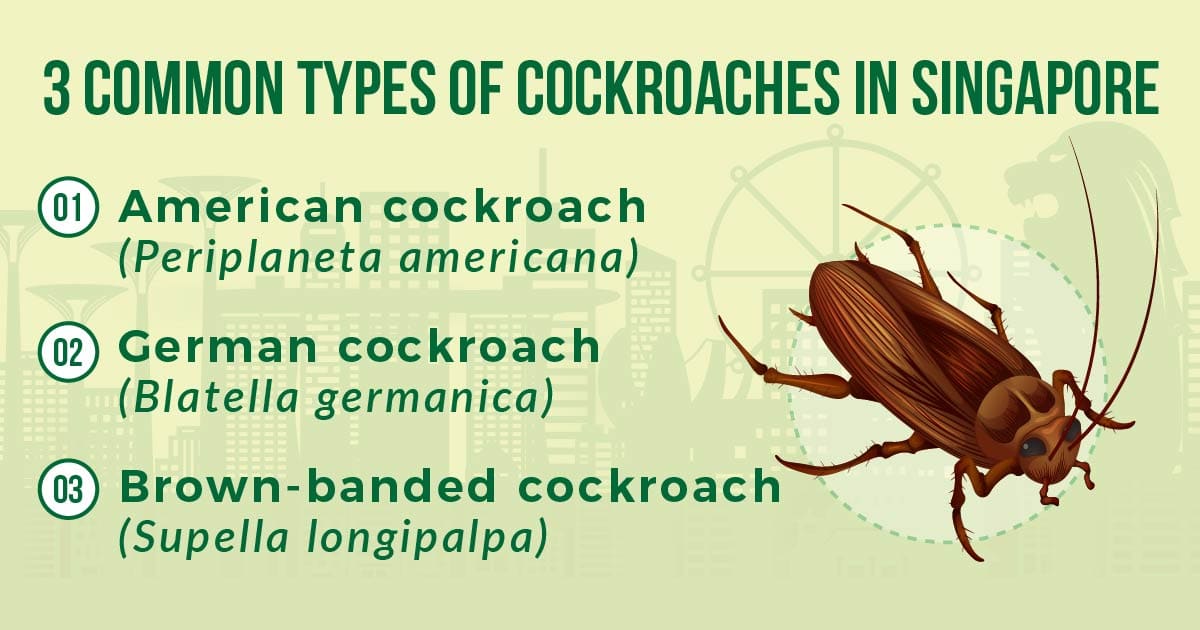
Types of Cockroaches in Singapore
As mentioned earlier, only less than 1% of cockroach species are pests. Here are three species commonly found in Singapore:
- American cockroach (Periplaneta americana)
- German cockroach (Blatella germanica)
- Brown-banded cockroach (Supella longipalpa)
American cockroach
The American cockroach may be the most commonly seen cockroach in Singapore. It has a reddish-brown body and a yellow band at its pronotum (plate-like structure behind the head). The size of an American cockroach can reach up to 40 to 50mm in length. American cockroaches are active both indoors and outdoors as they infest the sewer system.
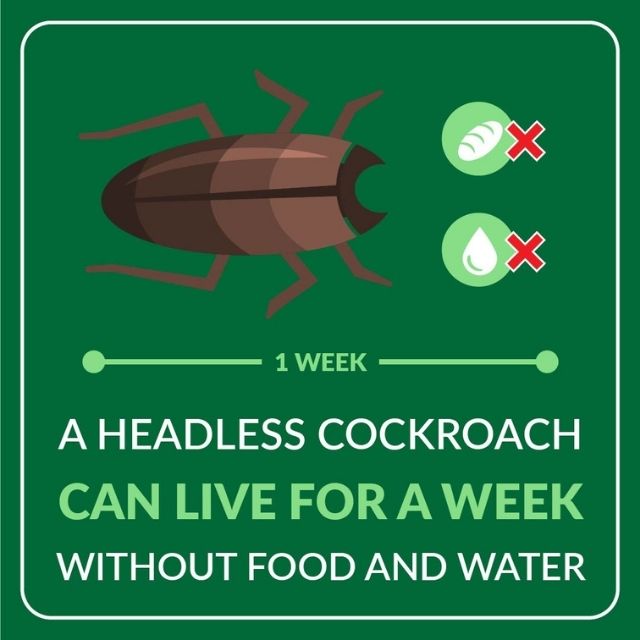
German cockroach
German cockroaches are around 20mm big. They have a light brown or tanned colour. Adult German cockroaches can be recognised by the two dark stripes on their back.
These are some places where you’ll commonly find German cockroaches:
- Indoors
- Kitchen
- Food preparation areas
Large German cockroach infestations cause nightmares to owners of restaurants and F&B outlets. The control strategies for this species is more challenging compared to the other species. This is due to the development of insecticide resistance and its high reproductive rate.
Brown-banded cockroach
The body size of brown-banded cockroaches is similar to that of German cockroaches. The males are light yellowish or brown, while the females have a darker colour. The brown-banded cockroach gets its name from the transverse stripes that are present on its body. This species is also responsible for cockroach infestations in homes and offices.
Want to find out more about bed bugs removal in Singapore?
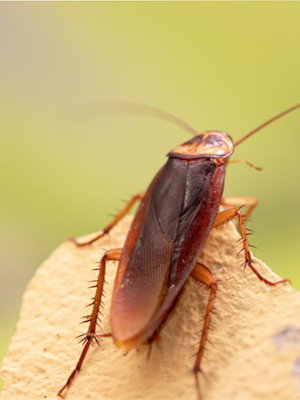
Life Cycle and Biology
Cockroaches undergo incomplete metamorphosis. They develop from egg and a few instar stages to adulthood. Newly emerged nymphs are miniature wingless adults. They will need to moult several times to reach the adult stage. Different species of cockroaches will have varying development periods and amounts of moults.
In common areas, they prefer to move or venture along the side of the wall. An interesting thing about cockroaches is that they feed on almost every organic material, preferably starchy food. They can feed on moist cardboard and even a piece of paper! Cockroaches are often reluctant to forage food far from their nesting area unless being deprived.
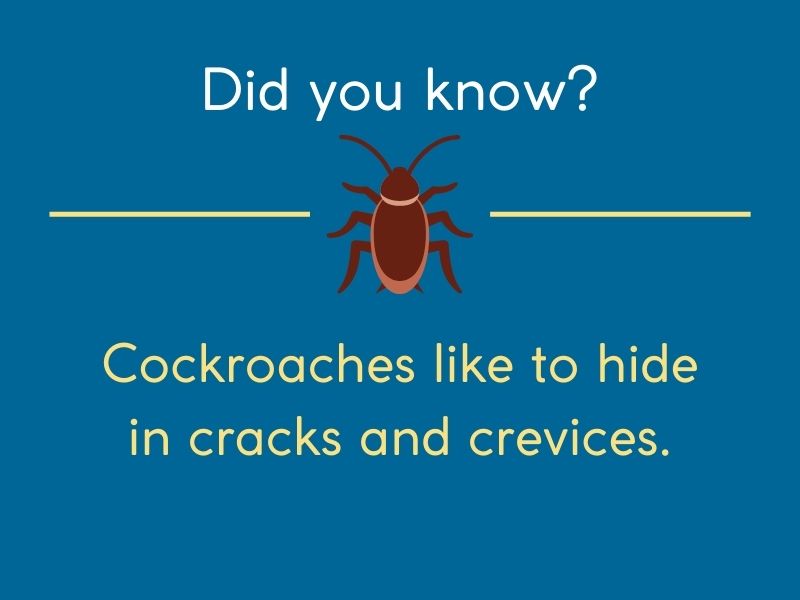
Medical Importance
Mechanical vectors of diseases
The living and feeding habits of cockroaches are commonly associated with poor hygiene and sanitation. This exposes them to a wide range of pathogens. They pick up the pathogens with their body and legs and transmit them to food, kitchen utensils and food preparation areas as they crawl past the surfaces.
Cockroaches are known to carry pathogens that cause diseases such as:
- Food poisoning
- Salmonellosis
- Cholera
The pathogens are invisible to the naked eyes so we must eliminate their vectors to avoid being infected by them.
Asthma and allergy
The body parts, excretory waste and even saliva contain allergens that may trigger allergic reactions. Typical allergy symptoms include:
- Sneezing
- Coughing
- Nasal congestion
- Wheezing
- Skin rash
Cockroach allergies are a common cause of asthma in both adults and children. If you have a cockroach infestation at home, you are at risk of developing prolonged allergic reactions that may lead to other medical problems.
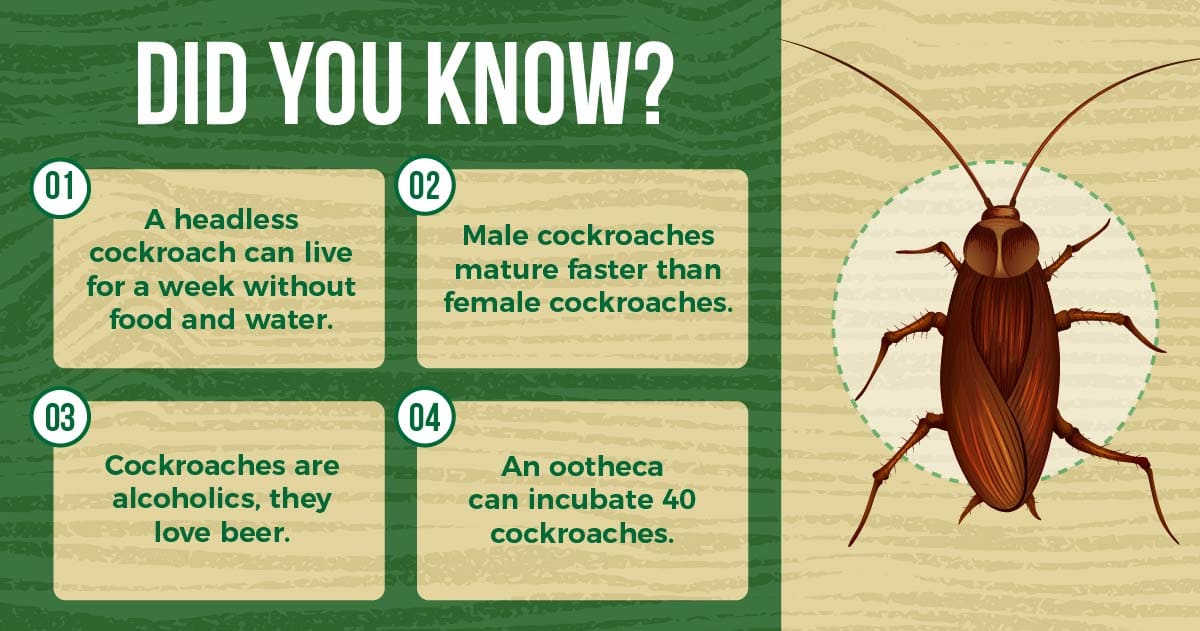
Katsaridaphobia
Katsaridaphobia, more commonly known as cockroach phobia, is the irrational and extreme fear of cockroaches.
Katsaridaphobia is not the same as being disgusted after seeing a cockroach. People with katsaridaphobia have unwarranted fear towards cockroaches that may cause them to:
- Stay frozen
- Have an elevated heart rate
- Have difficulty breathing
- Get panic attacks
One of the causes of katsaridaphobia is a bad or traumatic experience with cockroaches in the past. Katsaridaphobia is a mental disorder that can be overcome via psychotherapy, such as exposure therapy and cognitive behavioural therapy.
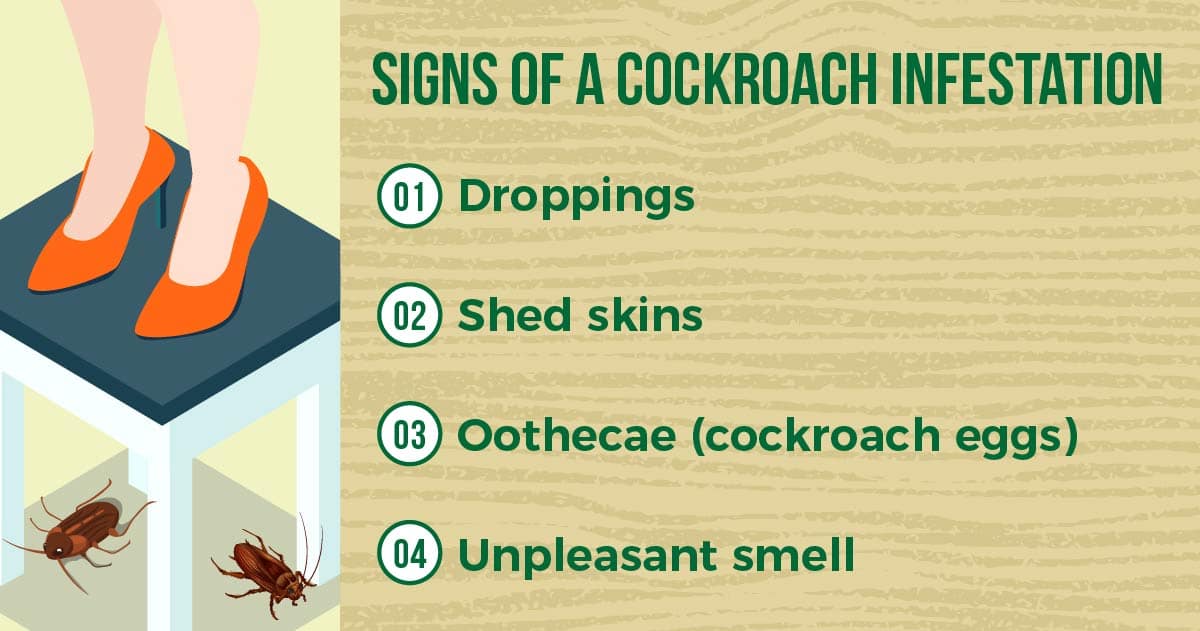
Signs of Cockroach Infestations
Cockroaches are nocturnal insects, most active at night. During the daytime, they hide in dark and moist areas. Hence, we often don’t notice their presence until the infestation becomes severe. Here, we’ll describe the tell-tale signs of a cockroach infestation.
1. Droppings
You may wonder how cockroach droppings look like? Cockroach droppings look something like black pepper with a dark colour and cylindrical shape. Their droppings are usually scattered along the wall or at the corners and edges of the cabinets. These are their main pathways and hiding areas.
2. Shed skins
Cockroaches molt just like other insects. Molting is a step in their growing process to reach the mature stage. Therefore, they will need to shed their skins periodically, around 5 to 8 times. If you see brownish shed skins at the potential areas mentioned above, that’s probably the evidence of a cockroach infestation.
In such case, you must start taking controlled action against them. The best way to prevent them from harboring is by keeping your house clean. Other aspects such as techniques of storing food and structural defects inside a property cannot be neglected.
3. Oothecae (cockroach eggs)
Oothecae are oval-shaped casings (inside full of multiple eggs), which are bigger and much more evident than cockroach droppings. It is vital to remove the ootheca before it hatched. The hatching of one cockroach ootheca can worsen a cockroach infestation.
A scary fact is that one ootheca can incubate more than 20 cockroaches inside!
Therefore, if you find an empty ootheca in your house, you may have to accept the fact that cockroaches have already built its family inside your home.
4. Unpleasant smell
Do cockroaches carry a smell? Yes! The scent released by a cockroach is usually undetectable by human beings. However, when it comes to a major cockroach infestation, a musty odour can be present. The smell is considered stinky for most people but when it comes to cockroaches, it carries important means!
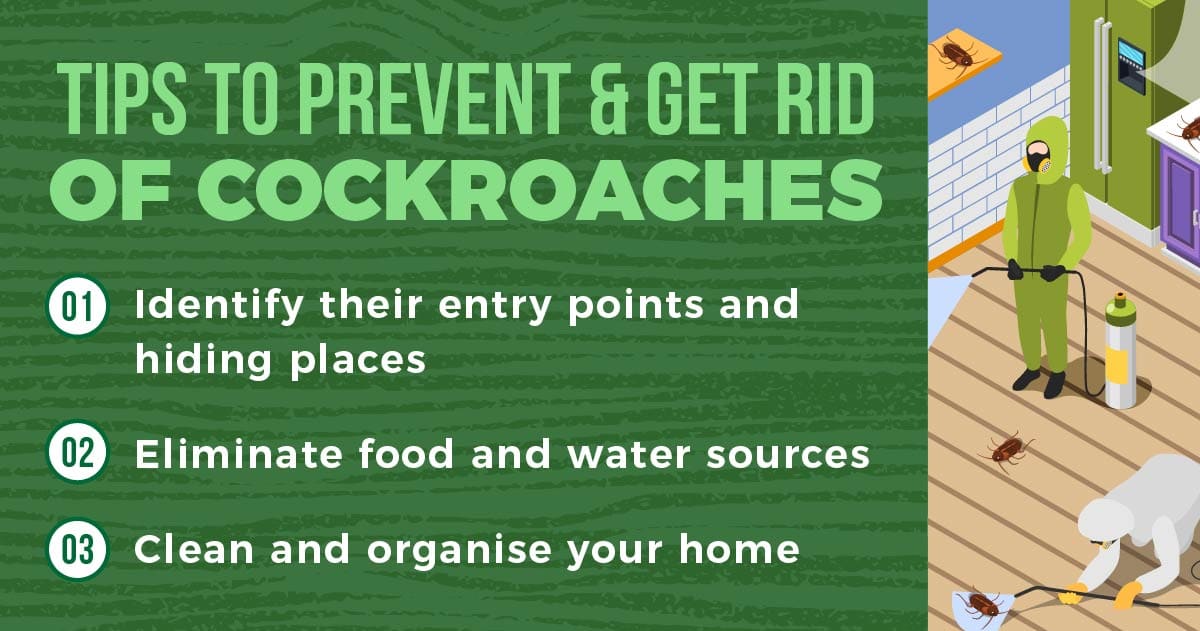
How to Prevent Cockroaches from Invading Your Home
1. Identify their entry points and hiding places
Inspection is a key activity in identifying the entry points and hiding places of cockroaches. Since cockroaches are nocturnal insects, it would be best if the inspection is carried out at night. Get yourself a torchlight and search for signs of their activities as mentioned above.
Cracks, crevices or gaps formed around the utility line and pipes are their potential entry points. Silicone-based caulk can be used to seal those entry points found. Besides, remember to inspect, clean and ventilate areas underneath the kitchen sink and refrigerator as these are the humid places that can become cockroach harbourages.
2. Make the Infested Area Less Conducive
After the inspection, keep in mind to remove, vacuum or wipe areas where cockroach eggs (ootheca), droppings and their carcasses were found. Remember one egg case can harbor 20 cockroaches inside, so remove it before it hatches to prevent a cockroach infestation.
You might not believe that cockroaches eat their own or nestmates’ droppings. Female cockroach droppings were seen highly attractive to nymph. The droppings also release pheromone (a chemical substance used to affect cockroach behavior and physiology).
3. Eliminate food and water sources
Food and water are the primary necessities of cockroaches. One of the best ways to prevent cockroaches from entering your property is to remove all available water sources.
Maintaining the housekeeping of the house is vital. We cannot forget to clean stains, grease and food scraps left in the kitchen as these can act as the food and water sources for cockroaches. Furthermore, make sure all stored food is sealed correctly to deny access.
Cockroaches can squeeze their bodies through a gap as small as 2mm wide.
In addition, some humid areas such as underneath the kitchen sink or refrigerator are potential nesting areas for cockroaches. So remember to inspect, clean and ventilate these areas to prevent a cockroach infestation.
4. Clean and organise your home
Messy and cluttered areas, especially those with paper and cardboards, are ideal harbourage and nesting sites of cockroaches. The paper products do not only serve as their hiding place. They also serve as food in case other food sources are not available.
It is essential to keep your home tidy and remove clutters regularly. The use of carton boxes for storage may allow cockroaches to hide in them. Thus, other alternatives, such as plastic boxes, can be used to prevent cockroach infestations.
5. Seek Professional Help
It would be an exhausting task to deal with a major cockroach infestation. Fear of cockroaches is the first barrier that most people will face. To deal with them, you may need to have plenty of time to fight. However, this is almost impossible for most people.
The short life cycle and high reproductive potential of cockroaches even make the control effort difficult. Hence, it would be easier to hand over this task to pest control professionals as they are more familiar with your enemy and has the best technique to manage the pest.
DIY Methods
Traps can capture and remove cockroaches from your home. The most common method is a sticky trap. These traps can be purchased from regular stores.
You may wonder about the effectiveness of using pandan leaves to prevent cockroach entry. Here, we tell you the truth. Pandan leaves release some pleasant smells which may serve as a weak natural repelling agent to deter cockroaches from coming near. However, when the leaves dried out, it can actually turn into a harbouring place for cockroaches! Hence, the use of pandan leaves is not a permanent solution for a cockroach infestation.
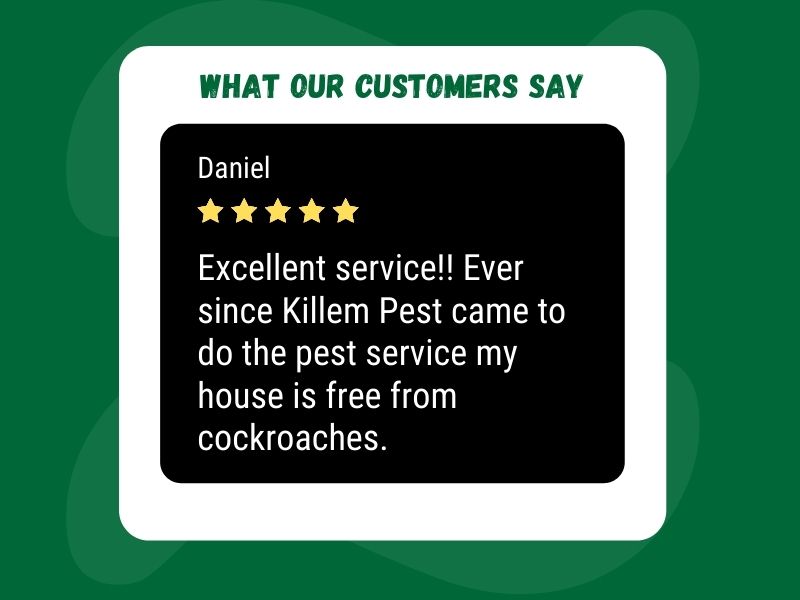
Professional Cockroach Treatment
Treating a cockroach infestation is more than just hitting them with your slippers or spraying insecticide aerosols on the cockroaches.
Insect monitoring stations are useful tools to detect the presence of cockroach infestations in Singapore. In premises with cockroach infestations, these stations can provide trained pest management professionals (PMP) with information such as the:
- Level of infestation
- Type of cockroach species
- Location of the nests or breeding sites
This information is important in determining a suitable treatment method. It has a tremendous impact on the effectiveness of the control programme.
Pro Tip: It is important to determine a suitable and effective treatment method depending on the type of cockroach infestation.
Residual spraying is the most common method used to eliminate crawling insects, including cockroaches.
The insecticides used in professional cockroach treatments are different from those available to the general public. Residual insecticides offer long-lasting protection against cockroaches. Its effect can last for months after application. Trained PMPs carry out residual spraying at locations where cockroaches are usually found, such as cracks and crevices.
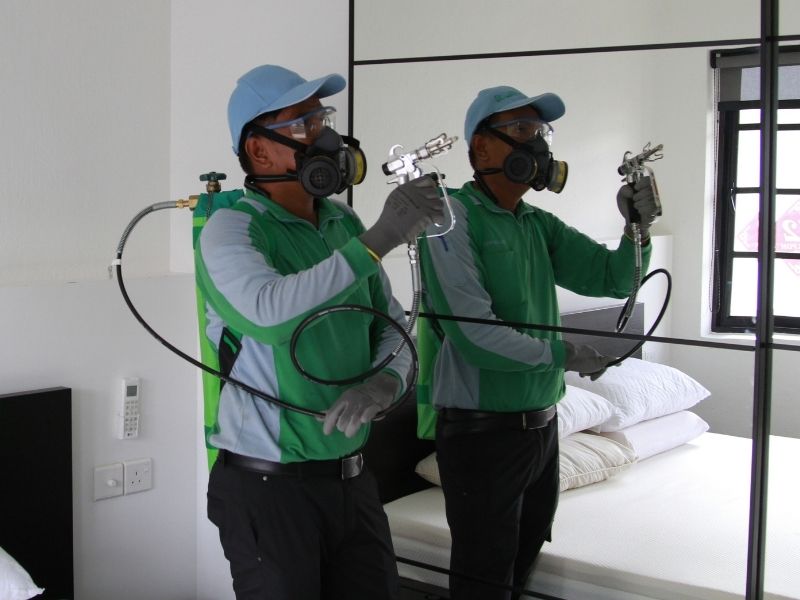
Cockroach baits combine insecticides with food attractants to kill cockroaches. The bait does not kill cockroaches immediately, but it intoxicates the cockroaches once they feed on the bait. The intoxicated cockroaches may leave behind their toxic vomitus, faeces or even their own dead bodies.
Cockroaches feed on the faeces and vomitus of their nestmates.
This behaviour, together with the cannibalising behaviour of cockroaches, makes the transfer of toxic bait effective and efficient as cockroaches move back to their nesting site and die off after foraging and feeding on the bait.
Innovation is important in the pest management industry to keep up with increasingly challenging pest issues. Pests, including cockroaches, are continually evolving and developing resistance to the control methods and insecticides that are used to eliminate them.
One of the latest cockroach treatment methods used in Singapore is dry treatment using Mirakn, a gas cylinder filled with a mixture of carbon dioxide and an active ingredient. There are three types of Mirakn treatments, each with different active ingredients that are suitable for targeting different pests.
The dry treatment has various characteristics. They are:
- Stainless
- Residue-less
- Non-flammable
- Odourless
Furthermore, the gaseous chemical provides excellent penetration over the other treatments. Dry treatment is a popular cockroach treatment in cars. Cockroaches thrive in cars, but it isn’t easy to control them due to the complex internal structures of the car.
Mirakn provides the ideal solution for hard-to-access areas as it can penetrate all parts of the treated area and leaves no stains. Thus, home and car owners need not worry about the cleaning process.

Pest Problem? Let Us Help.
Killem’s team of pest management professionals are trained and experienced in cockroach treatment programmes. Our professional knowledge and experience enable us to formulate a suitable solution to protect your property from cockroaches.
Frequently Asked Questions
Cockroaches can contaminate your food and carry pathogens that can cause allergies, asthma, diarrhea, dysentery, cholera and other diseases.
Cockroaches can get into your house through open doors and windows, cracks and holes in your building, or through shared pipes and holes in the walls.
Cockroaches prefer dark, warm and moist places, so they usually hide in narrow cracks, behind refrigerators, near plumbing fixtures, in dark drawers or in and around running electrical appliances.
Make sure to close all possible entries for cockroaches, such as cracks and crevices in the walls. Another thing you need to seal and store food properly.
We have been dealing with cockroach infestations in Singapore since 1993. You can count on us to treat your pest problem effectively and swiftly.
You can get a free quote by submitting a quote request (click the GET A QUOTE button on top of the page).
Related Posts
Webinar Series: Innovative Pest Control in Singapore
Cockroaches
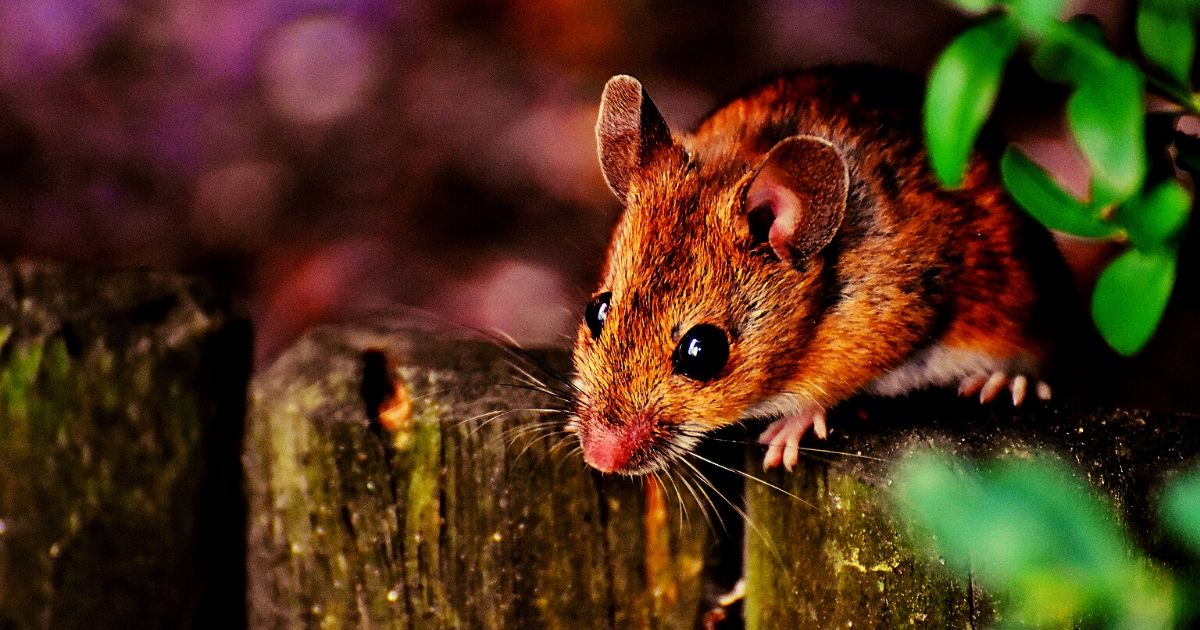
As part of our effort to educate our customers and the public about pests and the latest technology advancements in the pest management industries, we are proud to present our first three-part webinar series. In this article, we summarise the three webinars held in 2020. The first three Killem Webinars were specially designed for facility managers while remaining relevant to the general public.
Dengue, Disinfection and Distancing
The topic of the first webinar was “Dengue, Disinfection and Distancing”. In this webinar, we discussed the rising number of dengue cases in Singapore amidst the Coronavirus pandemic.
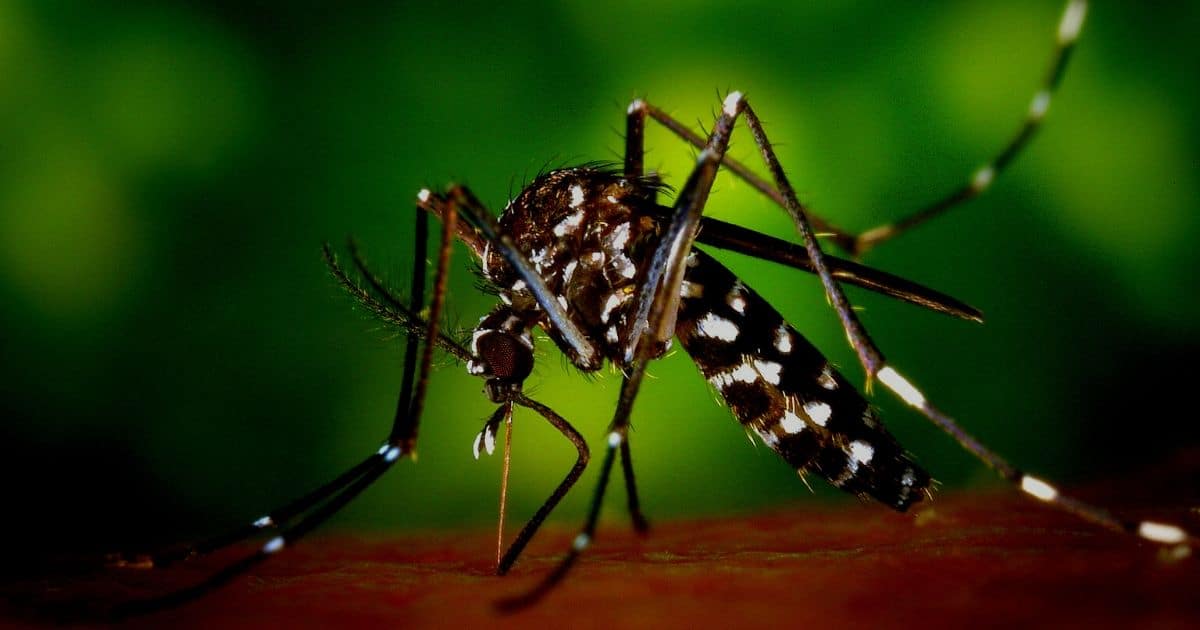
Topics include:
- The reasons behind the rise of dengue cases
- Ways to control the mosquito population
- The new norm (disinfection) that everyone is adapting now due to the pandemic
- Different types of disinfection methods
- The most critical areas to focus on during disinfection
- Things to consider when taking up a disinfection service
Q & A Session
Why is fogging still being carried out while misting treatment has a more prolonged residual activity?
Although misting is effective in areas around landscapes and plants, thermal fogging is still an effective method to kill mosquitoes present during the treatment. Thermal fogging is also used to comb a space to get rid of mosquitoes.
Can fogging be done around swimming pools?
The answer is no because the carrier of the insecticide used is usually kerosene or diesel. They cause the surface of the treated area to be oily and slippery. Therefore, carrying out thermal fogging near swimming pools may cause people to slip and fall. On the other hand, misting can be done near swimming pools since the carrier used is water and will not make the floor slippery.
Besides fogging and misting, mosquito treatment around swimming pools can be done by carrying out “Search & Destroy.” This method involves looking out for mosquito breeding sites and destroying them. Proper housekeeping around the swimming pool is also essential to eliminate harborage sites of mosquitoes.
How safe are the mosquito treatment methods?
The insecticides that we use are specifically formulated to affect designated pests. They are target-specific and will not affect other organisms like humans and animals. Proper personal protective equipment (PPE) needs to be used by Pest Management Professionals to prevent overexposure to chemicals. The small amount of chemicals that we breathe in during fogging treatment is not harmful to the general public.
What about the safety of sand granules used in mosquito control?
The sand granules are slow-releasing insecticides that can prevent mosquito breeding in locations with ponding water. They can also be placed at locations that may collect water to prevent mosquito breeding. Compared to larviciding using residual chemicals, sand granules’ action may be slower, but it can provide a longer-lasting effect.
What can be done to prevent mosquito breeding at public bin stations and bin centres?
Proper cleaning practices at these locations are important to prevent mosquito breeding. Gutters must be flushed daily to prevent the collection of water. Any uneven surfaces should be fixed so that water cannot build up. Another piece of advice from our operations director was to drill holes at the bottom of the rubbish bins so that water can escape from the bins to prevent water collection.
What are the effects of disinfectants on humans?
Inhaling small amounts of disinfectants will not have a significant effect on human health. However, we recommend avoiding overexposure to the disinfectants as much as possible. Thus, we need to ensure all safety precautions are in place and ensure no one is on-site during treatment. A treated area needs to be ventilated for one hour after disinfection is carried to allow the disinfectant particles to escape.
Is it true that certain disinfectants can last up to months or even years?
It may be true that a disinfectant can stay effective for a promised timespan. However, other factors may cause it to lose its effectiveness. For example, when people frequently touch a surface, the disinfectant on it may be wiped off. Besides, other pollutants such as dust and dirt may also contaminate the surface.
Want to find out more about mosquito control in Singapore?
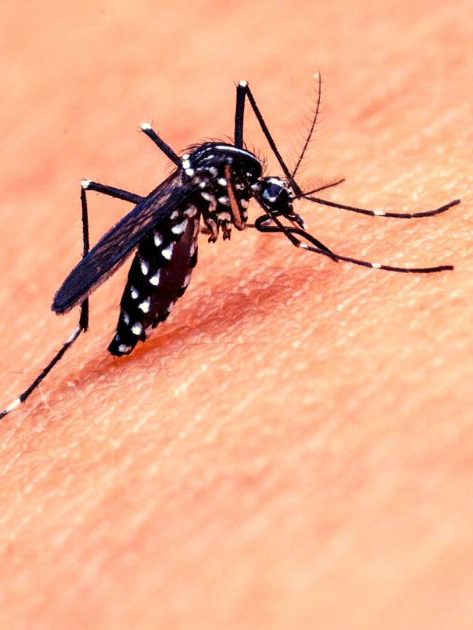
Cockroaches and Termites
In the second webinar, we discussed cockroaches and termites. These two insects are commonly encountered in our lives.
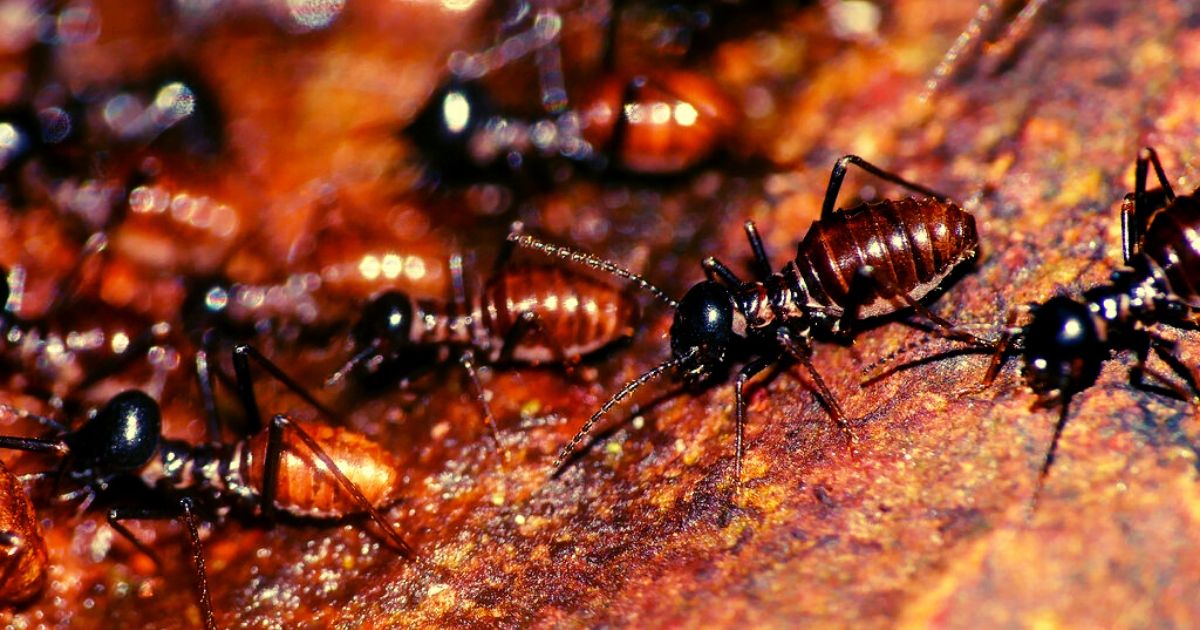
Topics include:
- Biology
- Prevention tips
- Technologies and treatments for the pests
Q & A Session
What is the hatching time of cockroaches’ ootheca?
The time needed for the ootheca to hatch differs between species. However, the typical household species take approximately 20 to 30 days to hatch into young cockroaches.
What is a suitable cockroach treatment method for a pneumatic waste collection system in high-rise buildings?
One of the latest treatment methods for cockroaches is using a product called Mirakn. Mirakn is applied using a dry spraying treatment. It consists of only the active ingredient and carbon dioxide as its carrier, making it an environmentally friendly insecticide that is stainless, odourless and non-combustible.
The carrier gas allows the insecticide to have excellent penetration. In addition, it can reach narrow gaps that are inaccessible via other treatment methods. Mirakn is safe for humans and pets, but the treated area should be left vacant to minimise exposure to chemicals.
Pro Tip: Methods used by professional pest control companies offer long-lasting protection against cockroaches.
All our Pest Management Professionals have undergone specialised training before they could become certified applicators of Mirakn. The frequency of Mirakn treatments at bin chutes can be affected by several factors. Depending on the infestation level and sanitation level, premises may need more frequent treatments to keep the cockroach population under control.
How to differentiate between subterranean termite and drywood termite infestations?
The signs given off by the infestations of these two groups of termites are different.
For subterranean termite infestations, the most distinguishable sign is the presence of mud tubes or soil-like materials in the infested area. The mud tubes are passageways constructed by subterranean termites to travel from one point to another. The most common sign of infestations by drywood termites is the presence of faecal pellets that resemble sawdust around the infested items or structures. The exit holes where the faecal pellets are pushed out of the infested wood can also be seen on the surface.
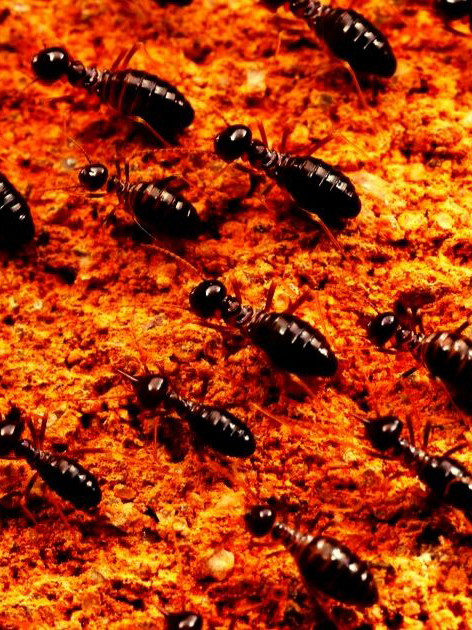
What are the effects of termiticides on plants and the surroundings?
The termiticides that Killem uses are Green Label certified. This guarantees that they are environmentally friendly. Besides, we strictly follow the termiticide’s recommended dosage to prevent harm and pollution to the environment.
What are the potential risks of the baiting treatment program for pets?
The active ingredient of the baits used for subterranean termite treatments targets the moulting process of termites. Animals with endoskeletons, such as dogs and cats, do not undergo a moulting process. Thus, pets are not affected by the baits.
How many bait stations need to be deployed in a heavily infested unit?
Subterranean termites live underground. Mud tubes are used for foraging. Therefore, although many mud tubes are found in a unit, they may belong to the same colony. Just one bait station is needed to control the termites in this unit. The termites will feed on the bait and bring the bait back to the nest. In turn, the bait is shared among the colony members.
Rodents: The Year of the Rat
In the third and last webinar, we focused on rodents. In this webinar titled “Rodents: The Year of The Rat’, we were honoured to have Dr How Yee Fatt as one of the speakers. Dr How is one of the leading entomologists in Singapore who is also the Business Support Manager (Technical R&D) of Bentz Jaz Singapore.

During the webinar, we discussed the biology and signs of rodent infestations. The speakers also shared several innovative prevention and management solutions. Killem Pest offers a special rodent monitoring and control system known as IPM square.
Q & A Session
What are the advantages of choosing IPM Square systems over other rodent monitoring systems?
There are many rodent monitoring systems in the market. The IPM Square Rat differs from the others as it incorporates snap traps with the use of sensors. While the system is detecting rodent activities, it simultaneously traps rodents and protects your house from infestations.
The IPM Square Rat is the camera used in rodent monitoring. It is highly intelligent and is able to recognise rodents using technology similar to facial recognition for humans. This technology enables accurate monitoring of rodent activities.
How do the monitoring systems work when there is a breakdown in the power supply or Wi-Fi networks?
The monitoring sensors and cameras are battery operated. Thus, they can function without a power supply. The outage of the Wi-Fi system may disrupt the monitoring systems since the data is continually being uploaded to the cloud servers.
However, the monitoring cameras have memory cards in them. Thus, they are still able to record the footage and store them in the local device storage. Users can also still review the footage by retrieving the local memory card and going back to a timeframe in the past.
How often should the rodent flush-out program be carried out?
The rodent flush-out program is an intensive program to manage rodent infestations. Depending on the infestation level, we have clients that require rodent flush-out programs with frequencies ranging from twice a year to monthly. Premises with heavy rodent infestations require more frequent rodent flush-out program applications. Routine maintenance can also help keep rodent populations under control.
Are glue boards safe for use in childcare centres?
Proper treatment methods are the key to ensuring treatment is safe. Glue boards should be strategically placed. Examples include the false ceiling or inside tamper-resistant bait stations (only accessible to Pest Management Professionals). The glue board method is applied to:
- Ensure the effectiveness of the control program
- Minimise the impact on the residents
Besides cages, are there any other rodent prevention methods for the garden or other outdoor spaces?
The tamper-resistant rodent bait station is a useful tool for rodent control. Rodenticides or traps are placed inside the station. Then, the station is placed in the garden. The bait stations prevent other animals, such as cats and dogs, from consuming the bait or activating the traps. Fallen leaves can serve as a home for rodents. Thus, keeping your garden and outdoor area clean and tidy is also important.
What is the rodent sealant?
During the webinar, we introduced a rodent sealant. This sealant can remain on the treated surface as long as there is no external disturbance. However, the sealant should be replenished or reapplied if it is disturbed by rodents or even humans. The sealant has a mild smell that repels rodents and is not detectable by humans during daily activities. The sealant has a shelf life of approximately five years. To maximise its shelf, proper closure and storage is recommended.
Is it possible to have more than one rodent species infesting a house?
Yes, it is possible. However, the rodents will nest at different locations. Roof rats and Norwegian rats are commonly found in Singapore. Roof rats (as their name implies) spend their time at higher elevations such as attics and false ceilings. Norwegian rats form burrows on the ground, or they nest in the sewers. The two species will not have the same nesting site as they are territorial.
What is the difference between shrews and rodents?
Shrews are animals that resemble rodents. Unlike rodents, shrews will not chew on wires or other items as they have different body structures. Shrews feed mainly on insects and other small animals such as birds, snakes and even rodents. Shrews are less likely to carry diseases because their behaviours are different from rodents. Rodents feed on a wide range of food, including rubbish and waste. They are commonly found in areas with poor sanitation such as the sewer and waste collection sites, which increases their chances of contracting various pathogens.

Pest Problem? Let Us Help.
We offer fast and effective precision treatments to eliminate pests while ensuring a safe environment for your home or business.
Related Posts
Fumigation Treatment: All You Need to Know
Cockroaches

The never-ending battle between humans and pests has led to the rapid development of pest management services in Singapore, including fumigation treatments. The wide-ranging pests and their nature of behaviour can interfere with human activities.
The difficulties of controlling pests – due to the limitation on certain treatments’ application – has led us to using fumigation treatment to deal with severe pest issues.
Fumigation treatment in Singapore is usually carried out in the freight, shipping, storage and food manufacturing industries. All fumigators must apply for training and a licence from the NEA (National Environmental Agency). Beyond that, pest management companies are also responsible for the application of fumigation permits before they are allowed to carry out fumigation treatments in Singapore.
Fumigants in Singapore
Fumigation treatment is a unique form of action for pest management.
It is usually adopted by pest management companies and clients when there are no other feasible forms of control to the target pest. However, most fumigants such as hydrogen cyanide, methyl bromide and hydrogen phosphide are toxic to pests as well as humans. Nevertheless, fumigation treatment has effective killing effects and has become an inevitable pest management method in Singapore.
Mode of Action of Fumigation Treatment
Fumigation treatment is a process of release or dispersal of toxic chemicals onto the targeted pests. It can be very fast as the volatile nature of fumigants is able to pass through inaccessible spaces. It has almost no limit to penetrate any object as long as tiny pores are present on the surface of the treated object. In other words, the entire structure is secured with the fumigation treatment. The toxic chemicals enter the pest body mainly through its breathing system.
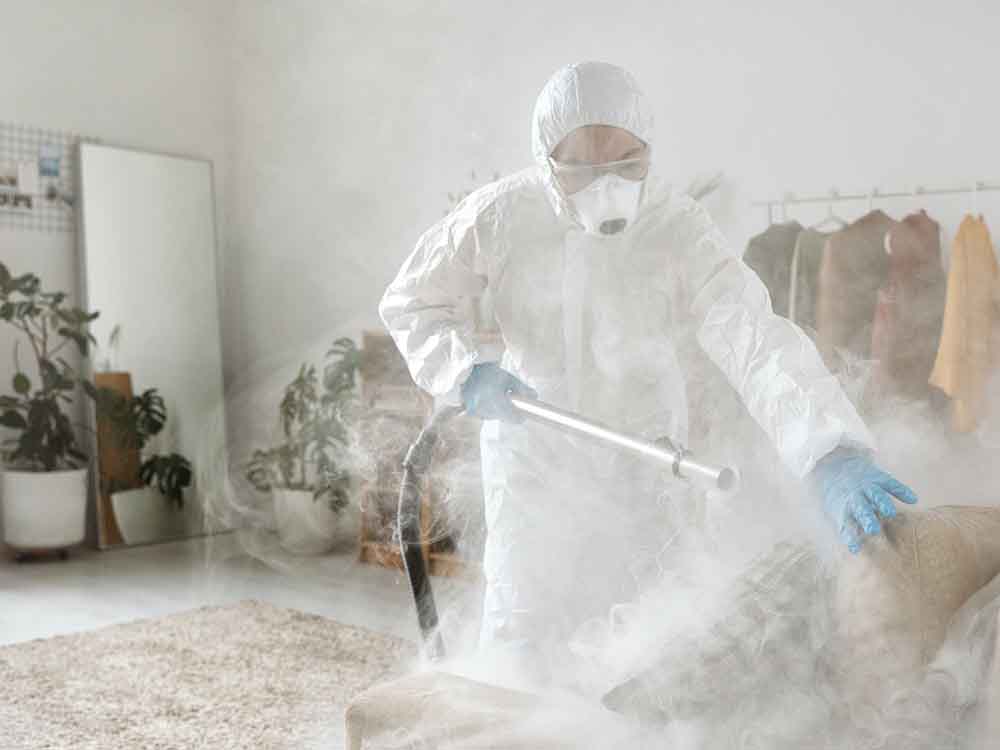
Target Pests in Fumigation Treatment
In general, fumigation treatment is helpful in dealing with all types of pests including stored product pests, wood borers, subterranean and drywood termites, bed bugs, cockroaches and even rats. It is often carried out in enclosed shipping containers, vessels and warehouses.
Fumigation on smaller structures such as infested wood and furniture is usually done for targeting drywood termites and wood borers. In this case, infested wood has to be removed and placed in an air-tight space to allow the proceeding of fumigation treatment.
Want to find out about pest maintenance programs in Singapore?
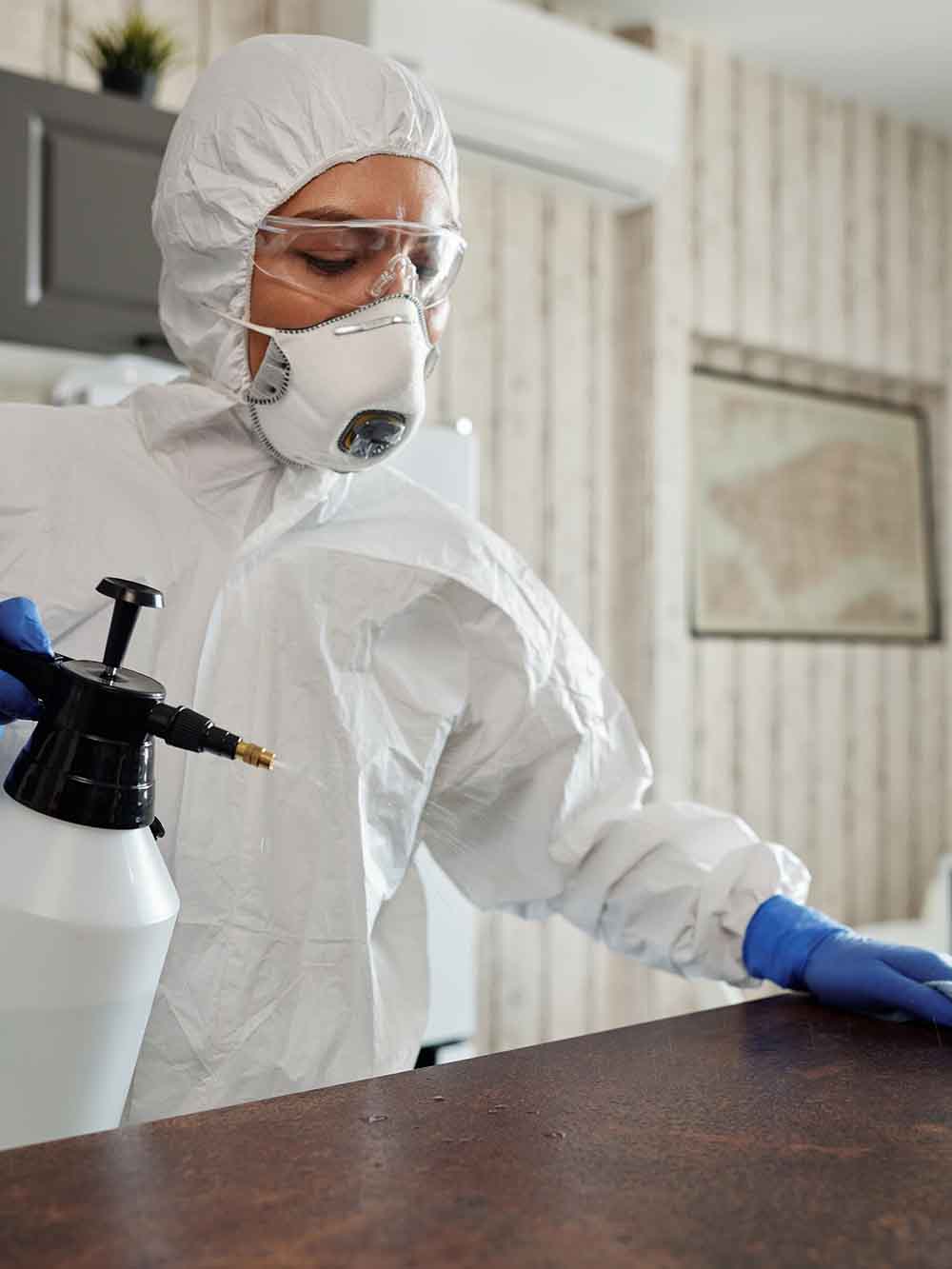
Disadvantages of Fumigation
One main disadvantage of using fumigation treatment is that there is no residual effect on the treated structure. Therefore, no residues remain in the treated spaces once the areas have been ventilated and cleaned properly. Hence, it does not help in protecting the treated structure from future pest infestations.
Since the knockdown effect of target pests depends on its respiration rate, low temperature of the treated environment may make the pest less susceptible. This is due to the fact that the lower the temperature of the surrounding, the lower the respiration rate of the pest.
Pro Tip: It's better to hire professional pest management services to ensure the fumigation treatment effectiveness.
Factors Contributing to Fumigation Failure
Fumigation failures are common. It can be due to the improper application and pest resistance. In addition, inappropriate choice of fumigants and loss of fumigant through leakage in treated spaces can also affect the effectiveness of the treatment. Hence, a leak detector is sometimes utilized before the treatment.
Final Note
Fumigation treatment, while seen to be effective because of its volatile and gaseous nature to target pests, can actually be harmful to human and pets. The excessive use and misuse of the fumigants not only pose harmful effects on human’s health but cause adverse effects on the treated commodity and property.
The use of it must be handled by trained and certified fumigators as they will have enough knowledge on its application and precaution steps before and after the treatment.

Pest Problem? Let Us Help.
We offer fast and effective precision treatments to eliminate pests while ensuring a safe environment for your home or business.
Careful planning and application must be adopted before the treatment is carried out. The appropriate choice and use of fumigants are vital as it may cause fumigation failures and hazards to the environment.
Frequently Asked Questions
Fumigation treatment is usually required in freight, shipping, storage and food manufacturing industries. Businesses in these industries must avoid the spread of pests and minimize the risk of damage to the goods or people’s health.
Fumigation treatment usually lasts for years, but it is recommended to have regular inspections to keep the areas protected.
It is important to remove plants and pets before fumigation, and also all the food and medicines that are open and/or are not sealed.
Related Posts
What You Need to Know About Cockroaches
Cockroaches
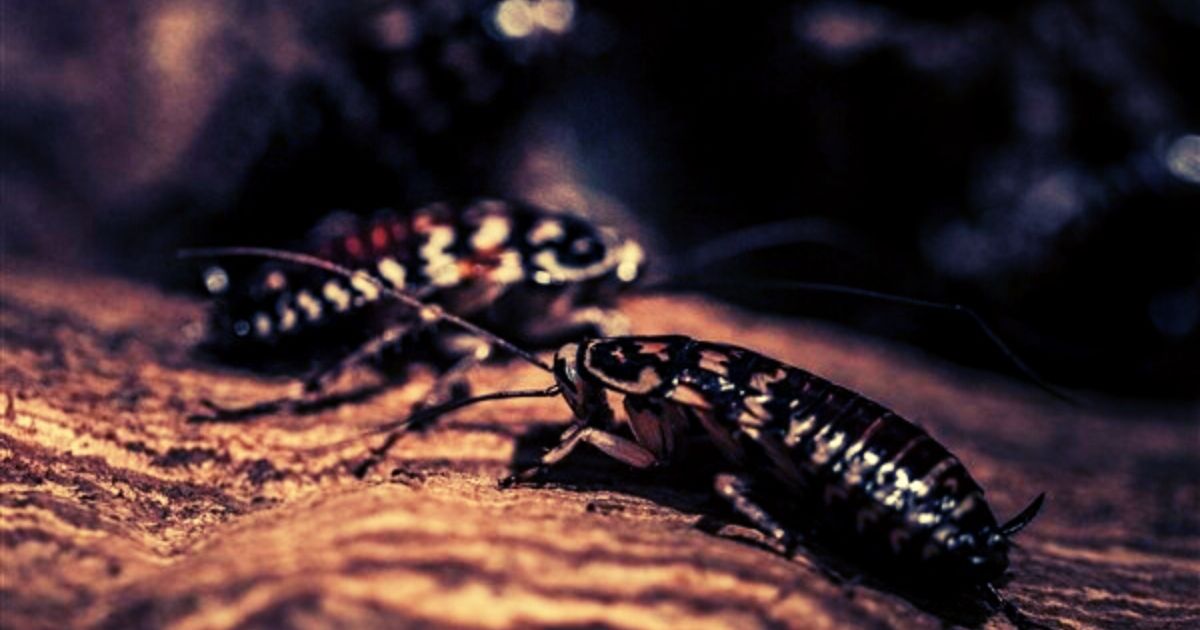
Cockroaches are amongst the most repulsive of pests, yet they are also one of the most prevalent types of pests which can be found in homes, restaurants, shopping centres and commercial buildings.
What Types of Cockroaches are There?
There are four types of cockroaches in Singapore: American (Periplaneta americana), German (Blattella germánica), Australian (Periplaneta australasiae), and brown (Supella Longipalpa).
- The American cockroach is the largest breed, extending to 1.6 inches in length. They are reddish-brown, have tri-segmented bodies, are winged, and have antennae on their heads.
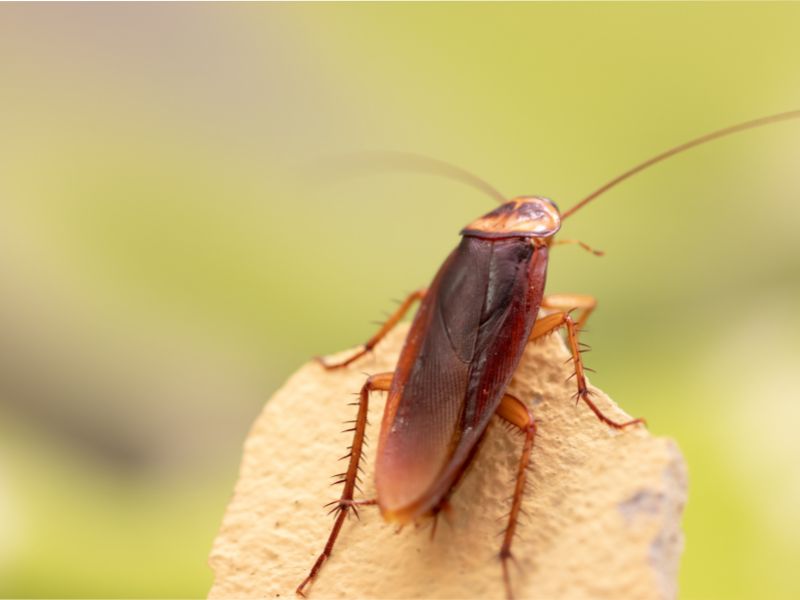
- The German cockroach is shorter, ranging from 1.1 to 1.6 inches in length. Various colors present themselves, going from a pale tan to black. Although it has wings on its back, it cannot fly. Another distinguishing characteristic is two dark lines that run from the base of the head to the beginning of the wings, looking like an equal (=) sign.
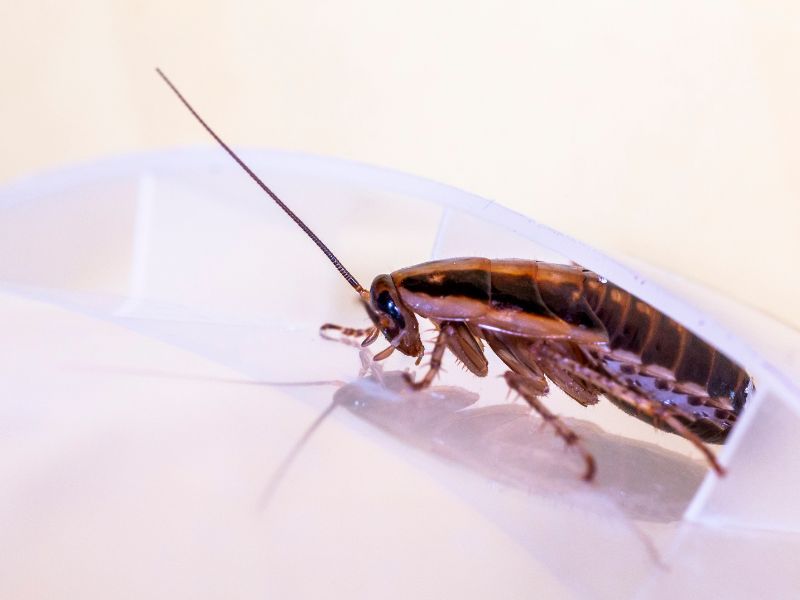
- The Australian cockroach is 0.9-1.4 inches in length. A mask pattern of dark brown and yellow near its head is the most defining feature, and it is able to fly. Its primary diet consists of plants, though it is willing to eat food from kitchens as well.
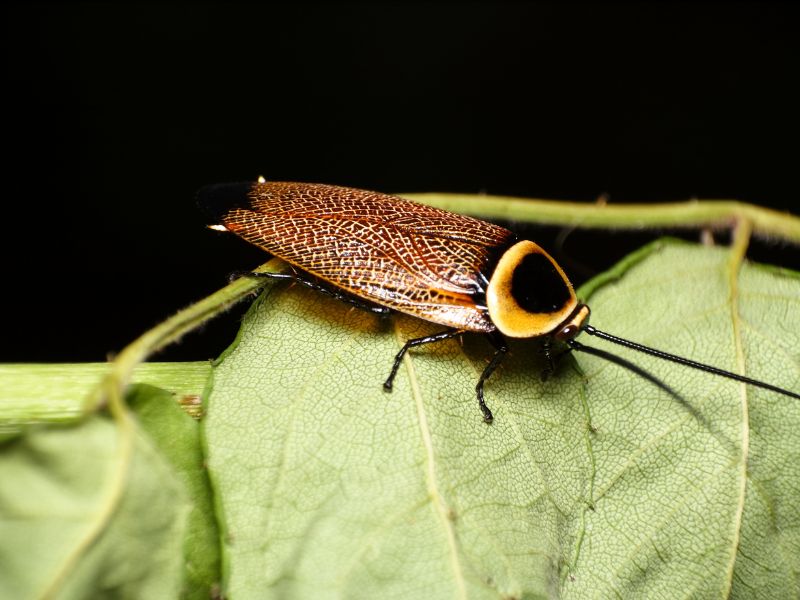
- Finally, the brown cockroach is the smallest of the four, growing to roughly 0.5 inches long. It is also a flier and is recognizable because of its light brown color and two long, brown bands that wrap around its body.
Some of the common types of cockroaches worldwide include German cockroaches, American cockroaches, brown-banded cockroaches and Oriental cockroaches.
- Brown-banded cockroaches can be up to 13 mm in length, have two light yellow bands across their bodies. This type of cockroach can jump when disturbed, and also have wings (but only males are capable of flight).
- Oriental cockroaches can be from 25mm (males) to 32mm (females) long. They have glossy, dark-brown or black bodies.
All cockroaches are indoor and outdoor pests, although the Australian cockroach prefers the outdoors. Three also prefer warm environments except for the brown cockroach, which likes dry spaces like cabinets.
Want to find out more about cockroach removal in Singapore?

Signs of a Cockroach Infestation
Cockroach infestations are messy.
One sure sign of an infestation is finding cockroach droppings around the home.
Nymphs (young cockroaches) will leave feces that are small and hard to detect, looking like pieces of black powder. Droppings from adults are larger and cylindrical.
Other signs are unpleasant odors and finding shell fragments underneath furniture or in hard to reach places. Because they are small, cockroaches can easily slip under floor mats, behind wallpaper, and through cracks in windows, doors, and walls. However, if they come in contact with liquid, they will leave a distinctive, greasy smear along a surface. Since they are nocturnal, seeing a cockroach during the day is another bad sign as it is evidence of an infestation.
In Singapore, cockroaches are commonly found in kitchens (especially in sing drains and behind appliances) and bin chutes, since they prefer a dark and moist habitat.
What to do if you Spot a Cockroach Infestation
If an infestation is detected, immediate action should be taken. Each breed of cockroach produces 100-200 young from one mating pair, and they reach sexual maturation within a matter of days. It is likely for cockroaches to multiply exponentially into the thousands. People in flats should contact their landlords and pest control providers immediately to prevent the spread of cockroaches to other homes. If in a house, a pest control provider should again be called.
Cockroaches carry many diseases in their feces and on their bodies.
Gastroenteritis, typhoid fever, salmonella, listeria, cholera, leprosy, and dysentery can all be found in or on them, making it crucial for people suffering from an infestation to not touch them, their droppings, or any food that might have been contaminated.
How to Prevent Roaches?
- Store food in airtight containers
- Empty out the trash
- Seal off all possible entry points
- Keep the kitchen clean!
Pro Tip: People should contact pest control providers immediately to prevent the spread of cockroaches.
How are Cockroaches Removed?
Our Pest Control Operators (PCOs) will use a variety of techniques to control populations depending on the location of the infestations. For example, in kitchens our PCOs would use gel bait or spraying, outdoors our PCOs would use spraying and fogging.
Killem Pest has also pioneered a technique of bin chute flush outs for condominiums to ensure that cockroaches do not enter the internal areas of the buildings from bin chutes. Gel bait is a type of toxic gel (targeted specifically at and toxic only to cockroaches) that is applied in cracks and crevices, which are areas cockroaches are attracted to. Cockroaches will feed on the gel bait, return to their nest, and die. When this happens, the other roaches will eat his body and become poisoned themselves, dying and repeating the cycle.
To get in touch with Killem about a cockroach problem, call us or please fill in the form on our cockroach removal page.

Pest Problem? Let Us Help.
We offer fast and effective precision treatments to eliminate pests while ensuring a safe environment for your home or business.
Frequently Asked Questions
Cockroaches don’t use biting to attack or defend unless they see food. They can pick crumbs or eat dead skin and grease, which may feel like biting.
Cockroaches can spread harmful bacteria and diseases, so it’s important to take measures if you see signs of cockroach infestation in your home.
Since cockroaches feed on food, waste, and garbage in your house, they will rarely go away on their own.
Related Posts
How to Carry Out Safe Pest Control with Children and Pets in Your Home
Cockroaches

Let’s be honest, no one wants to have pests in or near your home, especially when you have children or pets.
Infants and babies may be exposed to more pesticides than adults because they often spend more time closer to the ground, touching furniture bases or playing in the gardens where pesticides may have been applied. Infants and babies are also more likely to put fingers, toys and other objects that may have come into contact with pesticides into their mouths.
There are many different types of pests that can cause serious problems if they get out of hand, and you need to find ways you can control those pests safely and efficiently, without compromising the health and safety of your children and pets.
You can do some basic things that will help to keep the pests out of your home, but there might come a time when you need to call in the professionals.
What Are the Most Common Types of Pests?
While there are many different types of pests that could be plaguing your home, some of the most common and intrusive include:
Pests have the potential to destroy your home, get into your food and carry diseases. You should never have to live with pests. You should find ways to eradicate them.
What Are Safe Pesticides?
When it comes to choosing pesticides that you want, or you want your professional provider to use in and around your home, you need to be very careful. Many brands on the market are full of chemicals that could harm your children and your pets if it were ingested.
When you are choosing pesticides that you can use to deal better with the pests that you find, you should look for those that are organic and that do not have toxic chemicals in them.
One of the best things about working with Killem Pest for your pest control needs is that we use original, non-generic chemicals that are environmentally friendly and have low mammalian toxicity. This means that even if children or pets accidentally ingest the pesticide, they would not become ill.
Pro Tip: To choose an effective pesticide, you need to know what pest you are dealing with.
In addition, you can do other things that will help to keep your children and pets safe. If you are putting out bait for rodents, for example, never leave it in an area where your children or pets could have access to it. They could put it in their mouth. Instead, put the bait into a locked bait station or in an area that cannot be opened or reached by children or pets so that only rodents can access it.
If the pest control company has come and sprayed, make sure that any of the residual spraying has dried before allowing children or pets into the area. Make sure your animals are not licking the plants or the walls where the chemicals were sprayed, too.
You should also always make sure your children wash their hands after they have been playing outdoors, and stress the importance of not touching any bait stations that you might have.
How to Keep Pests Away
The following are some very simple and basic tips that can help you to control some of the pests in and around your home:
- Keeping your food in airtight containers can help to control the influx of ants, as well as rodents and roaches.
- If you have fruit that is left out on the counter, check it regularly to see if there are any bad spots on it, as this can draw fruit flies and other types of pests.
- A natural type of pesticide that you can make at home is citrus oil. You can use equal parts orange peels and water, and simmer them. Remove the peels and put the water into a spray containers and then spray around the windows, doors, and other areas where pests might be getting into the property.

Pest Problem? Let Us Help.
We offer fast and effective precision treatments to eliminate pests while ensuring a safe environment for your home or business.
Call in the Professionals
Of course, when it comes to pest problems, sometimes, the DIY home pest control methods are simply not enough. You need to call in the professionals that can provide you with a thorough service and remove those pests for good no matter what type they might be.
Frequently Asked Questions
The safety depends on the products and quality of services that you use, but generally, products for household insects pose no threat to people or pets. That is of course if the products are applied correctly and at low concentrations.
Modern pest control methods are designed to target pests and remain safe for children and pets in your house. Professionals are trained in safe application techniques and use only safe and approved products.
Although it’s not always necessary, some people feel comfortable taking their children and pets out of the house during pest treatment. Overall, you need to give the products time to dry before letting your household members have free access to the treated areas.


